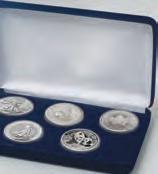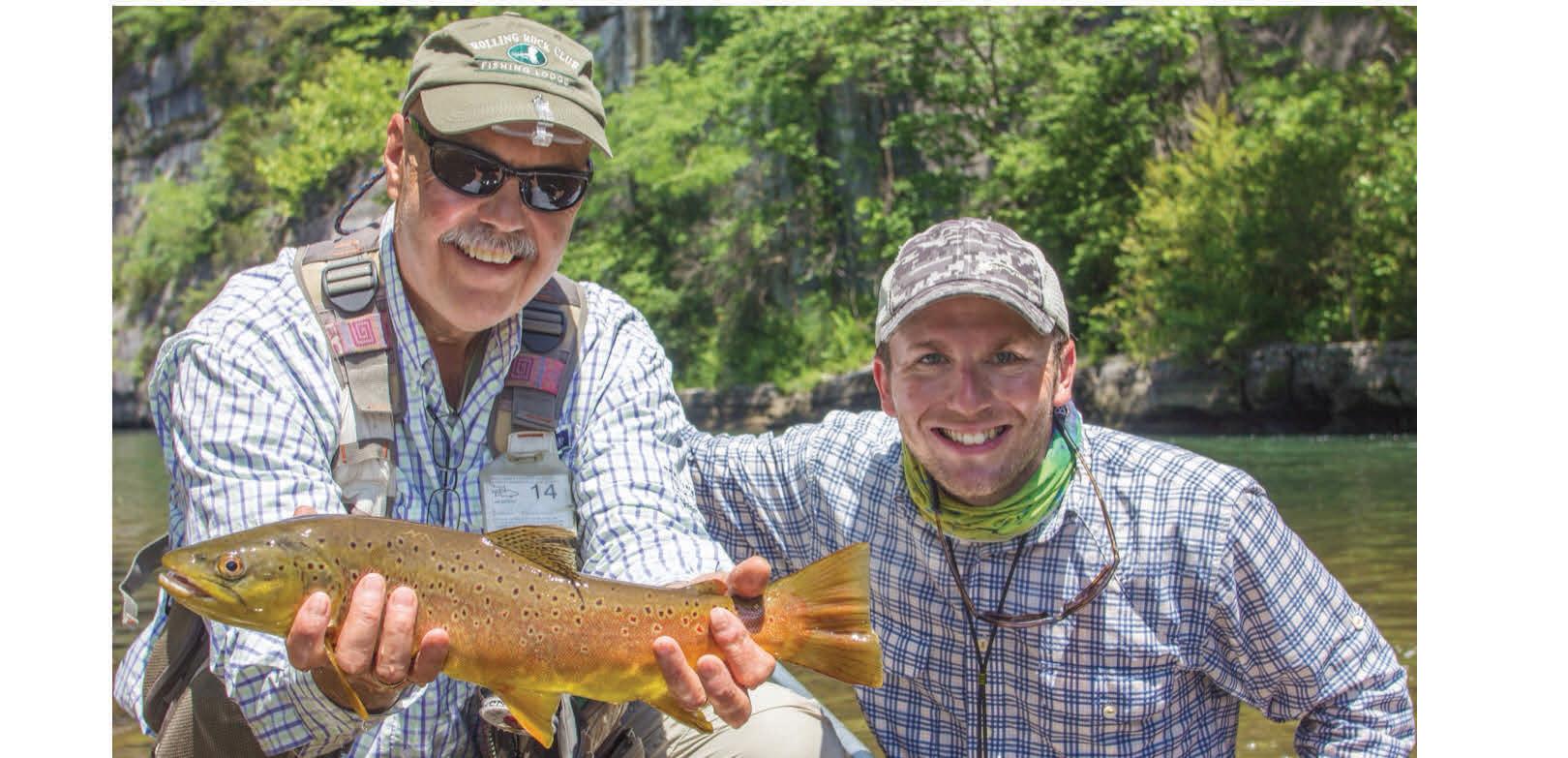














































































Do you love boating? Then you know how fun and relaxing it can be on the open water. But you also know that things can go wrong sometimes, like storms, accidents, theft, or injuries. That’s why boat insurance is so important. Here are some reasons why.
• Boat insurance can help you pay for damage to your boat, or to other boats or docks, up to specifed limits.
• If you borrowed money to buy your boat, your lender may require insurance. And if you want to explore different places, some marinas or waterways may ask you to show proof of insurance.
Progressive Casualty Ins. Co. and af fliates Coverages subject to policy terms and conditions.
• Boat insurance can also come in handy if you need an on-water tow, jump start, or fuel delivery with optional Sign & Glide® coverage. And if your boat sinks, boat insurance can pay for the cost of removing it from the water (if removal is legally required).
Get boat insurance from Progressive and enjoy the peace of mind that comes with it.
Scan to get a quote in as little as 4 minutes
Go to progressive.com to learn more.
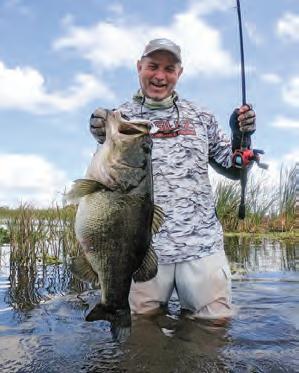

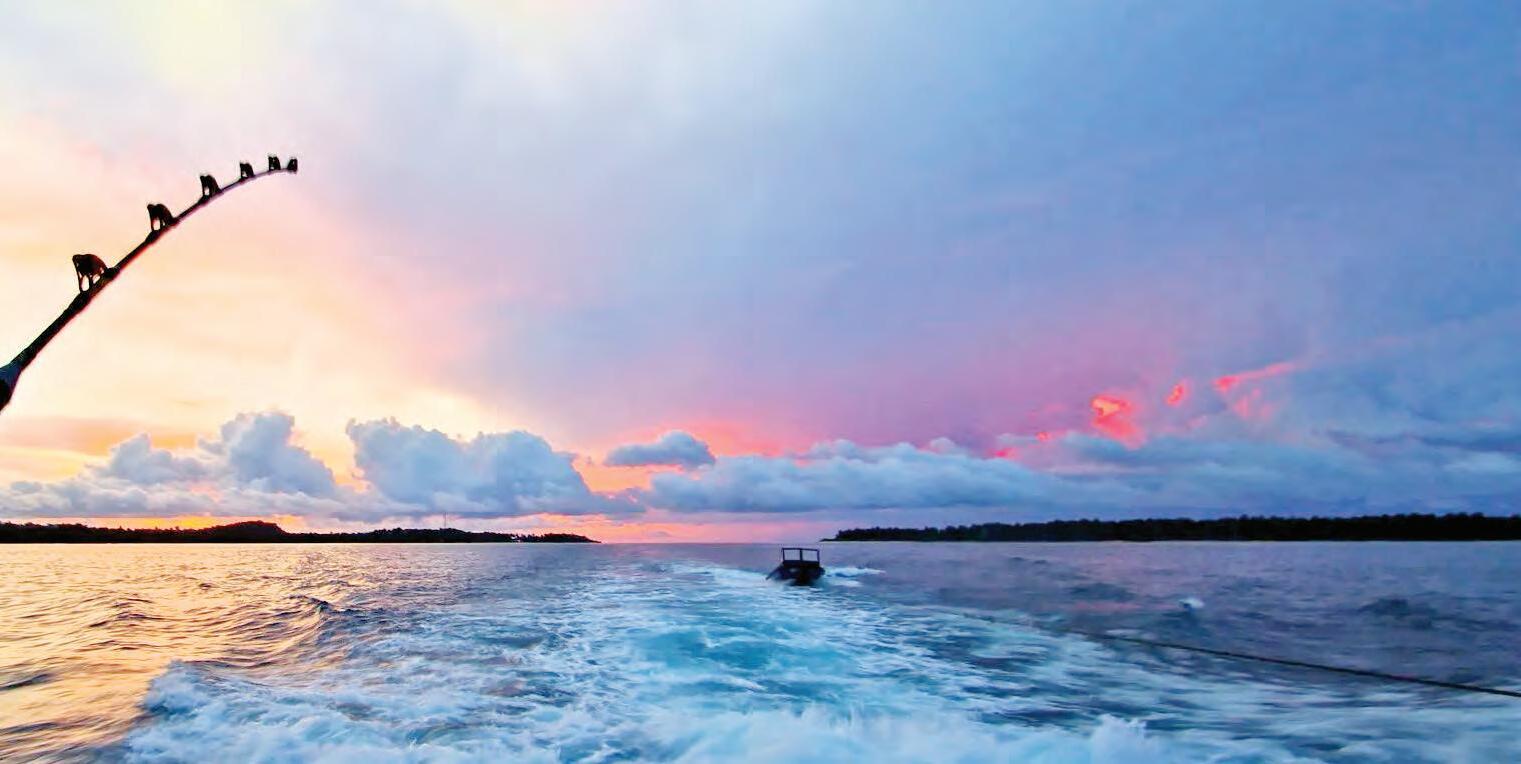


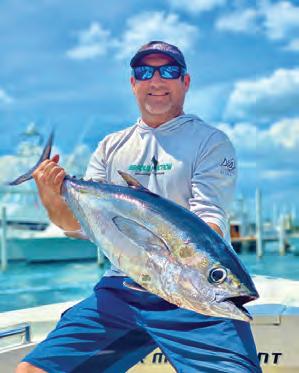





















Swordfshing is great any time of the year, but during summer you can justify the fuel burn to get where they live. It’s nearly impossible to run that far ofshore in June and not come across diving birds indicative of mahi or tuna. With minimal efort, this can be a nice score to put something in the box if you don’t have luck with the swords. It is normal to get skunked while swordfshing, and I don’t recommend going if you can’t accept that possibility. Te best way to go into it is to be fully prepared for both a fsh of a lifetime or to just chill with friends. Make no mistake, when you do land one of these beasts, it’s some of the most exciting fshing you can experience, and it’s worth the skunk risk.
Although you don’t have to run as far, the same consolation prize applies to heading out for tilefsh, snowy and yellowedge grouper, queen snapper, barrelfsh and rosies. Mahi fshing to, from and during deep-dropping rounds out a trip nicely.
Be prepared for mahi when heading ofshore in summer. Keep at least four rods designated for working a school and more for trolling. J hooks are a must for these head-shaking, sky-rocketing, fippy-fappy, squirm-fsh, but just about any line and bait will do. Tese tasty little dummies aren’t picky and would strike a banana peel if you jigged it right. Tat said, the speed of the bait is a variable you might have to adapt to. Teir toddler mentality kicks in when you try to take a bait away from them, encouraging them to strike something they just turned their nose up at. If you get hit when reeling in your bait, open your bail and give them a chance to eat.
If you get excited about fsh with pointy faces, be prepared for a marlin encounter this time of year. I keep rigged ballyhoo in a trolling spread and a pitch rod set up. Marlin aren’t overly common here, but when you see one, you want to be prepared for more than to simply wave and think, “that was neat.”
SBy Capt. Quinlyn Haddonummer in the Keys, albeit hotter than the devil’s you-know-where, is one of the best times to be on the water. With more calm days, open seasons for most species, and mahi peppering ofshore waters, this is the time of year to boogie out and hunt for whatever tickles your fancy.


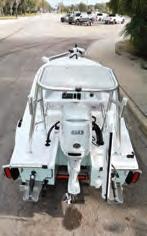
Marlin enjoy a mahi snack as much as we do and will pop up unexpectedly while mahi fshing. If you have a large live bait, toss that sucker out. If not, a mahi from the box will do in a pinch. Give her time to eat, hang on and enjoy the ride.
Mahi season is already of to a great start for both size and numbers. Come on down and fll your coolers!
Capt. Quinlyn Haddon; Sweet e’nuf charters, marathon, Florida Keys; @captainquinlyn; captainquinlyn.com; (504) 920-6342.
50,000 Plus Anglers Strong Promoting TakeAction Initiatives For Preserving Our Fisheries And Supporting Our Community.


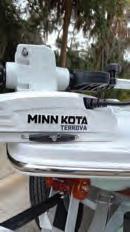
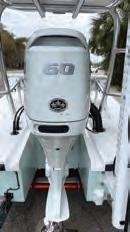
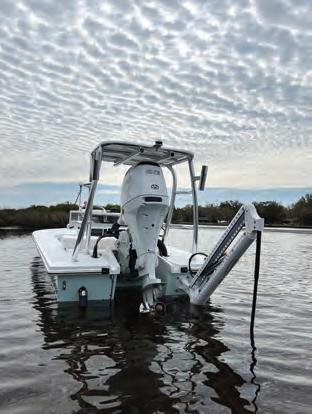
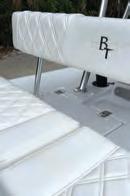
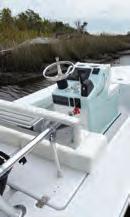
At 18’2” in length and with a 70” beam, the Mosquito is a very capable hull for many situations – however it’s designed to do one thing with absolute perfection: silently stalk inshore game fsh in the shallowest coastal waters.


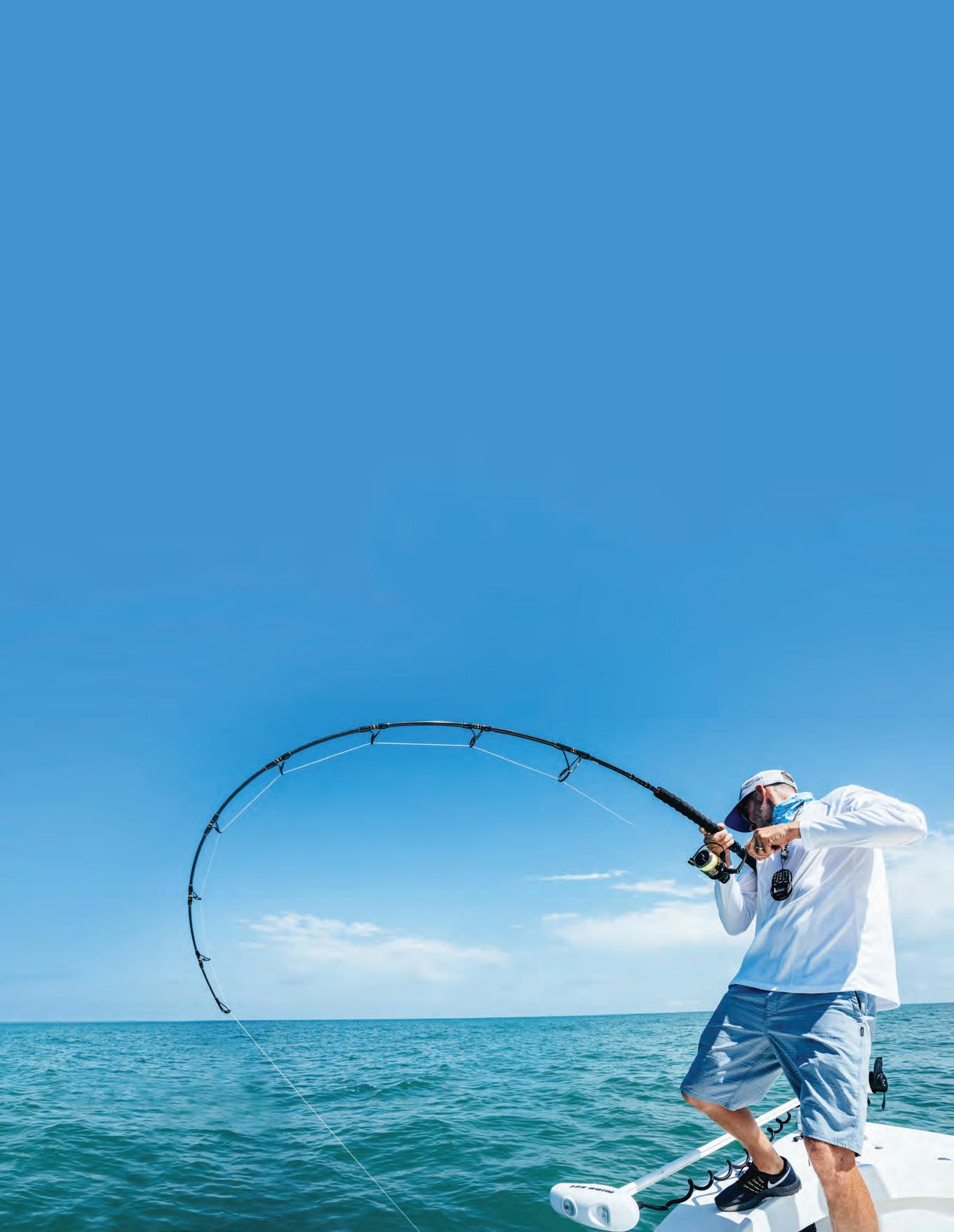
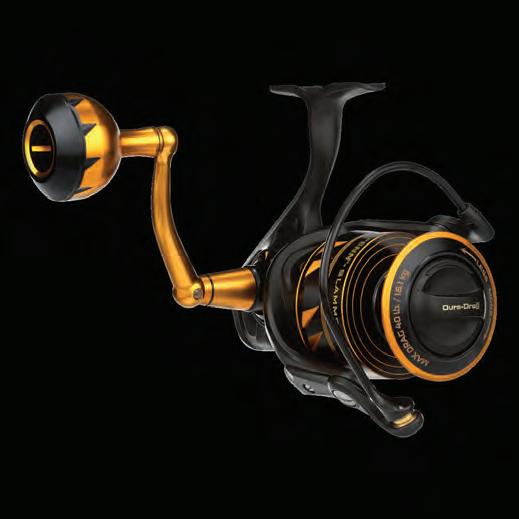
Packed with more fish stopping features than ever before, the PENN ® Slammer ® IV takes a tradition of excellence to a whole new level. An 8+1 sealed stainless steel bearing system with Hydrophobic Line Roller Bearing makes the reel as smooth as it is tough. The Slammer IV drag system was upgraded to provide wider range. And the reel body and spool are now even more perfectly sealed. Just like the fate of the fsh. PENN. LET THE BATTLE BEGIN.











word for it. See for yourself. Scan here, and we’ll show you!


 13" 16" 22" 24"
13" 16" 22" 24"


The “Grandaddy of all Kingfsh Tournaments” will get the First Coast buzzing July 13-20, as the 44th annual Greater Jacksonville Kingfsh Tournament presented by VyStar Credit Union hosts a full week of tournaments with more than $500,000 in cash and prizes.
Te competition kicks of July 13 with the Kingfsh Kick Of Beach Tournament, in which competitors are limited to state waters within 3 miles of shore. Tis event evens the odds for the smaller boats to haul in the largest kingfsh of the day and collect the $50,000 cash prize.
Fishing for the General Tournament begins Friday morning, July 19. Tis cornerstone event pays out to 20 places for both large fsh and aggregate. First place for largest fsh of the tournament will be awarded a Contender 28T with twin 200 Yamaha outboards, an Ameritrail Trailer and a custom T-top and leaning post by Custom Marine. Tis boat package is valued at more than $225,000.
Junior anglers have a shot at a 16foot boat with a 15 hp Yamaha, and the Junior Ofshore Tournament pays out to 25 places. Te Ladies Division pays out to 10 places.
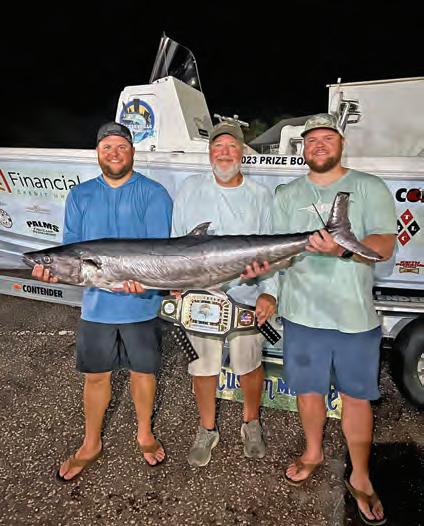

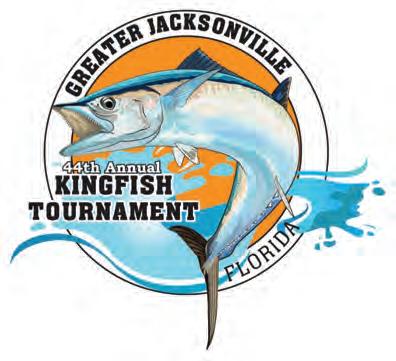
cold beverages, hot food and vendors. Awards Day on Saturday, July 20 is all about celebration, with Kids Zone activities, rafes and seminars.
For inshore anglers, the popular Redfsh Tournament fshes on Saturday, July 20 with payouts of more than $12,000.
Jacksonville Marine Charities is the operating arm of the event, and it supports non-profts throughout the state. Recently, Child Cancer Fund, the Down Syndrome Association and the Child Guidance Center have beneftted from the organization, which also supports other local charity fshing events like Te Premier Trout, Flounder Pounder, Wounded Heroes on the Water and others.
For complete details, visit king fshtournament.com.
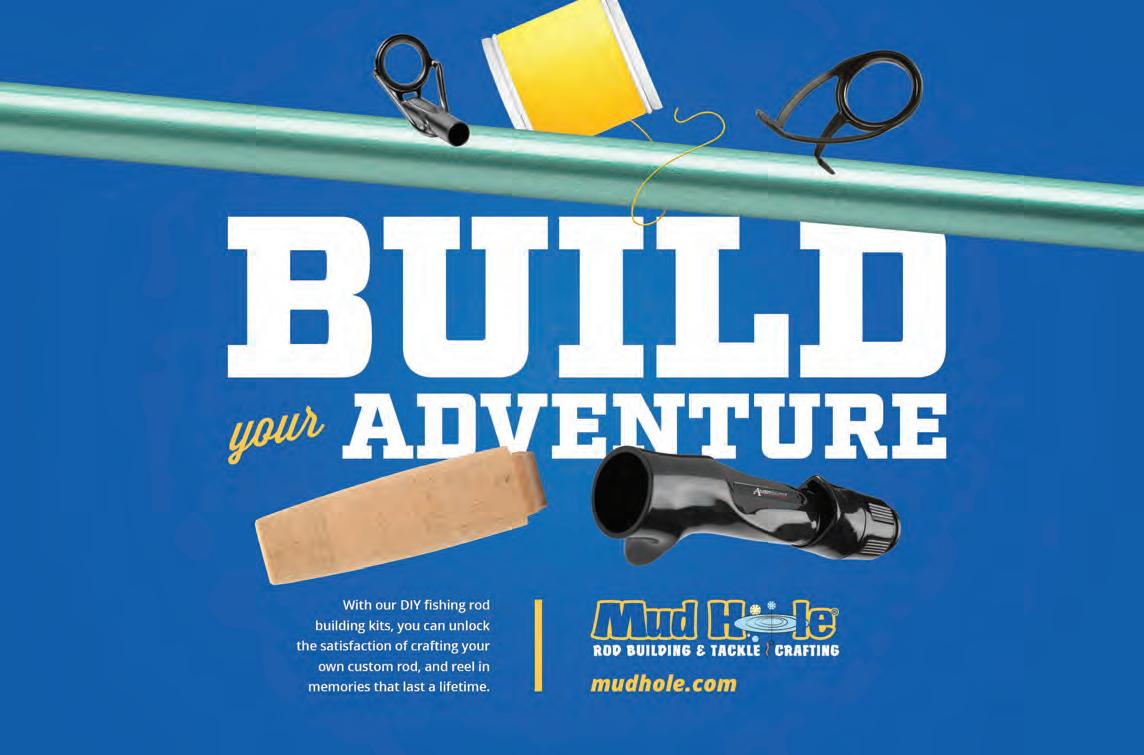

Alarge trout rising to a high-riding dry fy is one of life’s true pleasures. It’s pretty darn easy to see. Te fy is bouncing happily along the surface, and with a splash it’s gone.
On the other hand, that same fat rainbow trout sucking in a nymph 6 feet down in a dark run may not be as obvious. When you’re nymphing, speed is of the essence. In a second, that fsh will expel the fy. Tere are a bunch of diferent strike indicators designed to help you see the sometimes-faint signal of a hit. Some work well, some break, some slide, and some just suck.
I love yarn indicators for their sensitivity and the plastic air-flled bobbers for ease of use. Both styles rigged up the leader about twice the depth of the water you’re fshing help you detect the strike. Any hesitation, dive or shif in direction of your indicator might be a hit.
I tell clients, if they think a fsh might even be breathing on the fy to set the hook! You get a heck of a lot more strikes than you think you do when nymph fshing. Any slack between your indicator and fy allows a fsh eat and spit your nymph out, and sometimes go completely undetected.
At close range, high-stick or Czech-nymphing techniques work great. No indicator is needed, as diferent colored lines or coiled-line indicators that straighten when a fsh takes are the deal. A lot of the time, the trout is felt when it takes the fy, or you will see the line suddenly stop. Tis method is deadly in experienced hands.
Another method of strike indication is the use of a big dry fy as the
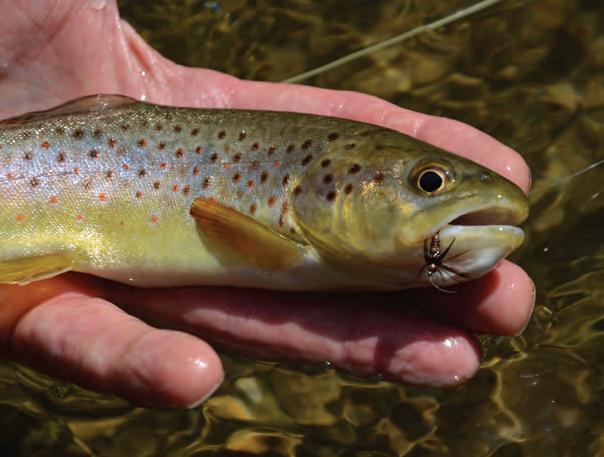
indicator. Usually, a piece of fuorocarbon tippet is tied to the hook and a nymph or two hang underneath. Tis is a good when the fsh might spook if a plastic bobber crashes on their heads. A buggy looking dry fy is a lot less scary.
Another cool way to catch trout on subsurface fies is to watch them eat it. I call this ninja fshing! You’ll need the sun at your back or directly overhead. Start by locating a particular fsh, and then tie on a brightly colored fy that stands out and is easy to see. Cast upstream of the fsh, and let it drif down to the fsh. Sometimes a fy bounced right into their face will get a refex strike. Tis is a good way to learn how fsh react to fies and how currents afect your ofering. If you are in a pool with several fsh, you might be amazed at how many fsh take a swipe at it. You will then realize how many strikes you’ve been missing.
David Hulsey is a North Georgia-based guide and fy fshing instructor. Call him at (770) 639-4001 and visit Hulsey Fly Fishing at hulsey fy fshing.com.
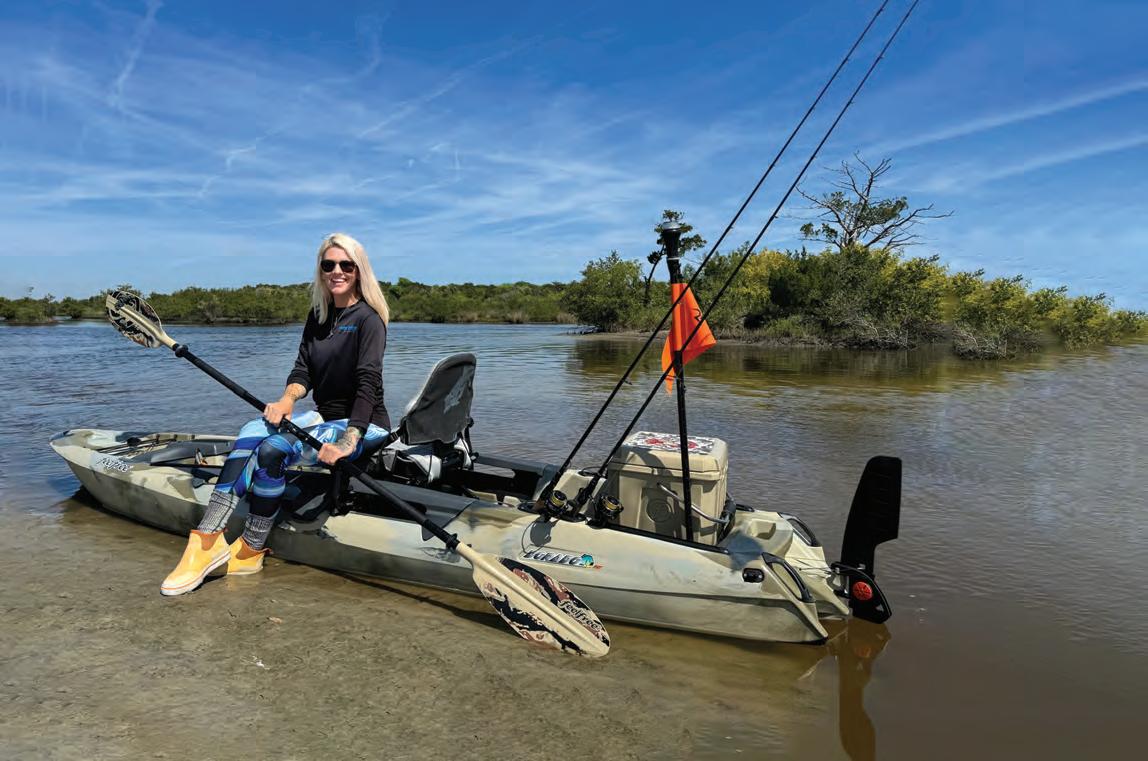





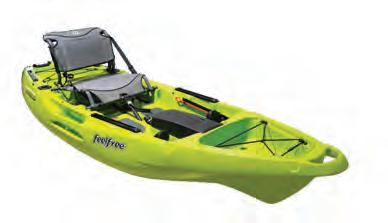

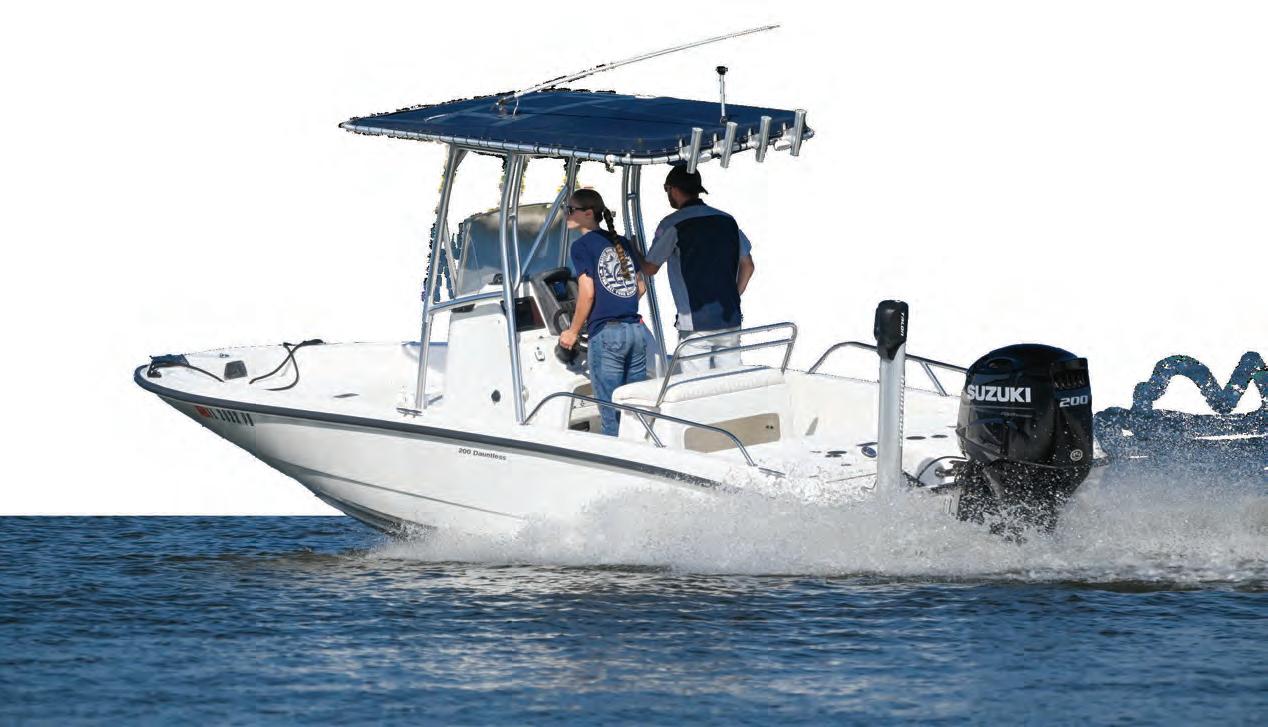







Advanced Marine Services has been serving boaters in Central Florida for the past 24 years. Focusing on service, parts sales and repowers, Advanced is not like the others; customer service is their priority. Teir staf has over 100 combined years of experience in the boating industry.
As an authorized service and repower center for many brands including Yamaha, Volvo, Suzuki, Mercury, Evinrude and Cox Diesel, your needs will be covered. With a huge inventory of parts, they’ll likely have what you’re looking for. Advanced has also catalogued an inventory of over 5,000 used parts in case what you are looking for is no longer available or you can’t fnd it anywhere else.
Advanced ofers services such as routine maintenance, custom electronics, trolling motor and power-pole installation. Tey don’t stop there. Rewiring your boat, gauge and switch panel replacements, steering, canvas and Sea-Deck are also in their arsenal. Almost anything you can think of, they can handle including cutting custom dash panels with their computerized CNC router.
Ready for the latest in engine technology? Advanced Marine has an inventory of over 100 Yamaha and Mercury engines ready to bolt onto the back of your boat, and fnancing is available. Refresh your dashboard with the latest gauge and NMEA integration technology. Just give their repower specialist Harrison a call for an estimate, and you never know when the
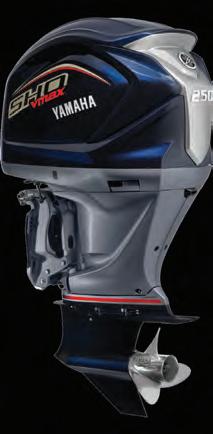

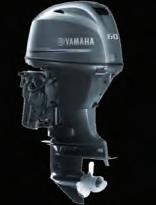

manufacturers will be ofering additional warranty promotions or engine pricing specials to sweeten the deal.
If you use your boat for work, such as a fshing guide, boat rental or marine construction company, exclusive additional discounts are available from Advanced, and they will get you back on the water FAST! Contact Advanced Marine today!!!
8:00 am - 5:00 pm Saturday 9:00 am – 1:00 pm

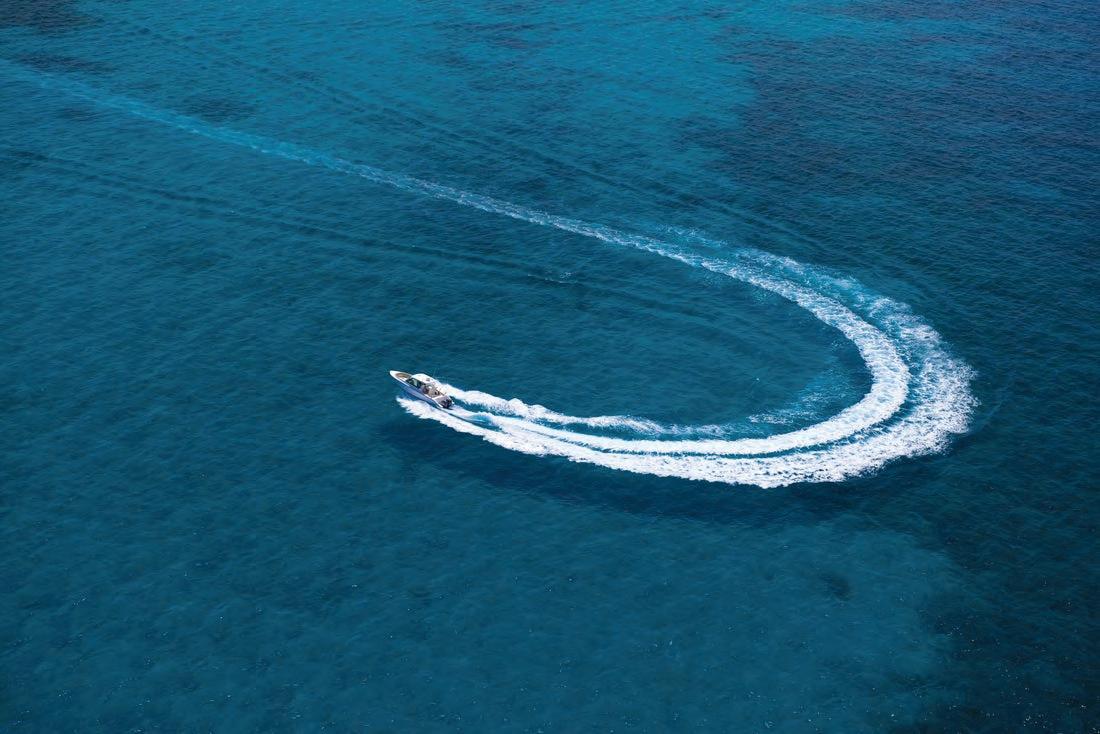
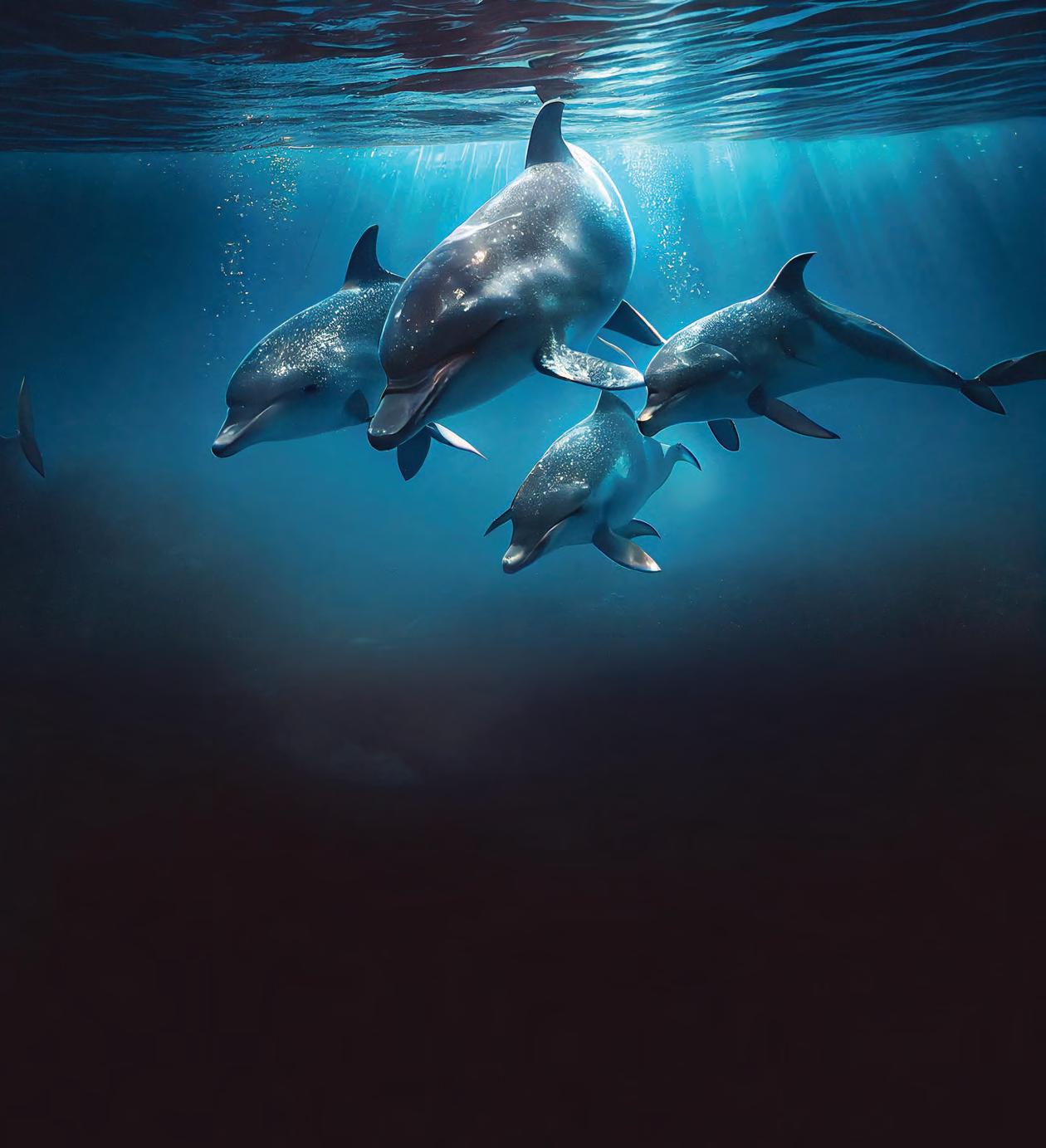
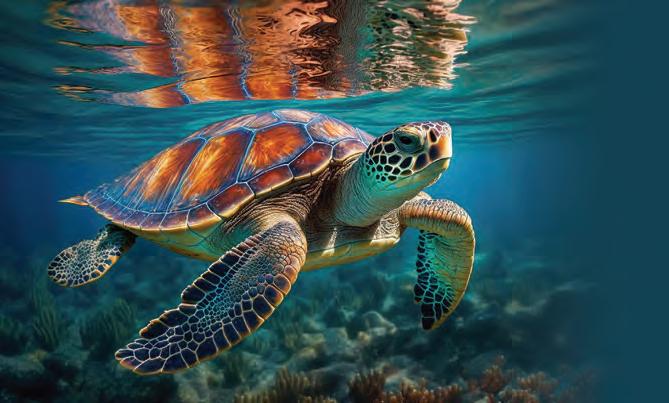



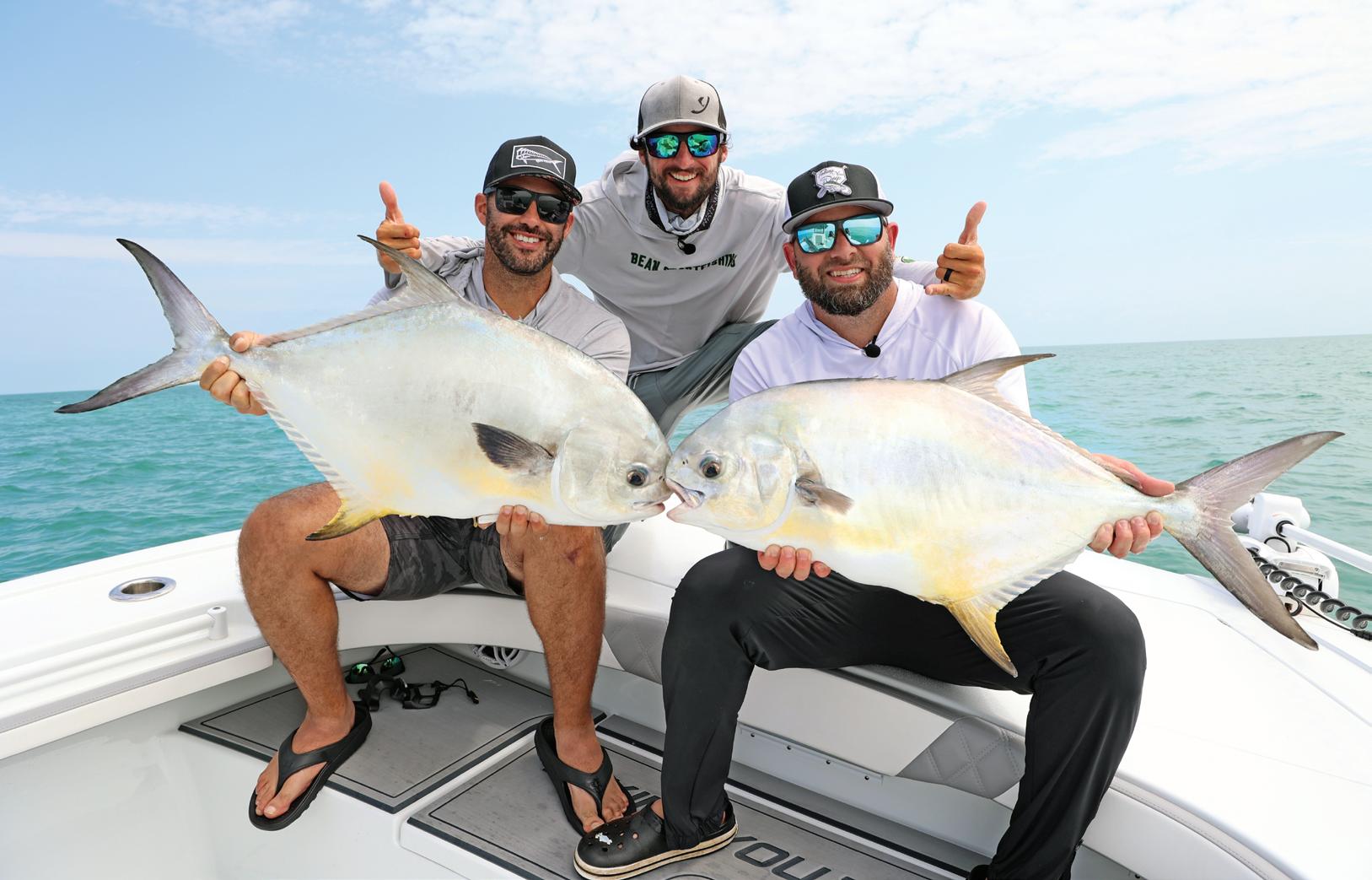


Permit schools have been sighted in the Florida Keys over the past couple of months, and June marks the fnal stretch of their journey. Tese elusive permit are wrapping up their ‘spring break’ routine and are heading to some of our ofshore wrecks to spawn.
Tis time of year can be great for permit, because they school up and provide ample opportunity for hook-ups. Pursuing a permit takes strategy and stamina, since these fsh are known for putting up a serious battle. Any angler who is interested in trying to land one of these
prized sportfsh needs to know what they are signing up for.
When fshing for permit on ofshore wrecks in Islamorada, we usually target schools around wreck sites like the Eagle in June. Tese wrecks are typically on the ocean side in deeper waters, ranging from about 30 to 100 feet deep.
For tackle, we typically use 6500 combos with fuorocarbon leaders and circle hooks. Spotting and sight-casting to permit is usually the goto method. Tis means looking for glimpses of fashing silver just below the surface. Permit love
crabs, and they have great eyesight. fcial crabs like the Savage Gear 3D Crab are very realistic, and they are ective and cost-friendly. However, it’s tough to beat a live blue crab for permit bait. Hook them through the shell to keep them lively. Let the crab swim freely to drif into the school of permit and prepare for action. ght, fne-tuning the drag is crucial with permit because overpowering them won’t do the trick. You want the drag set just right, enough to make progress when reeling in, but allowing the permit to run… and it will run.
Permit are one of the most sought-afer sportfsh in the Keys because they’re notorious for their incredible strength. Anyone who’s ever hooked one can tell you that they’re strong enough to make even the toughest angler break a sweat. Once you do land your frst permit, it is a moment you’ll never forget.
While they are a ton of fun, permit aren’t known as a particularly desirable food fsh. Catch and release is the way to go because they play a crucial role in our ecosystem, and releasing them safely helps ensure we’ll have permit to play with in the future. Land them as quickly as you can. Handle them gently for a quick release to minimize stress and ensure the fshery thrives.
Many times while permit fshing, we encounter exciting bycatch like other jack species, grouper and snapper. It’s all about the thrill of the catch in these beautiful waters of the Florida Keys.
To book a permit charter, visit www.beansportfshing.com.


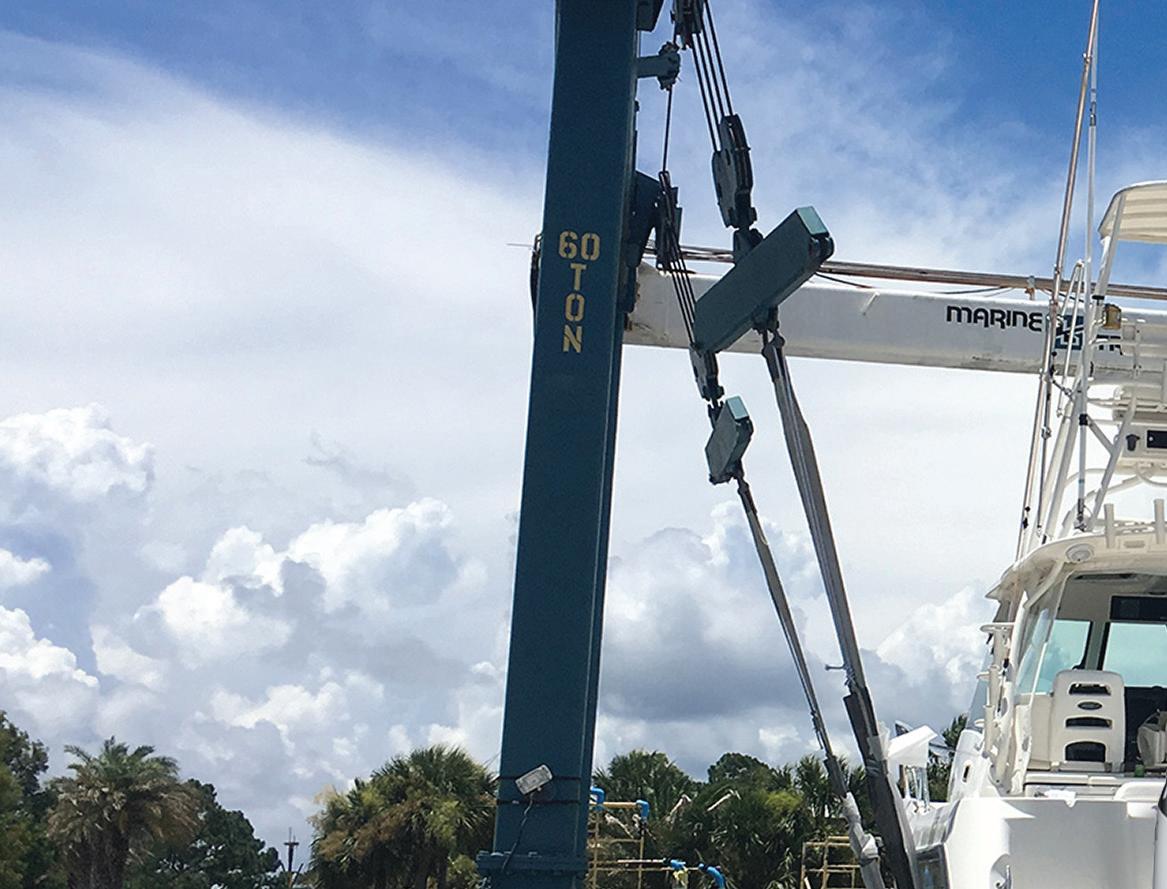









Whether considering repowering your trailer boat or your offshore beast, there is a Mastry Suzuki RePower Center that can serve your repower dreams. Mastry Suzuki RePower centers are the best in the business and have the experience, technical know-how and boating passion to make your repower project a remarkable success. With total boat systems capabilities your local Mastry Suzuki RePower Center can address all your upgrade aspirations. Essentially transforming your boat into a totally new boat at one single location.
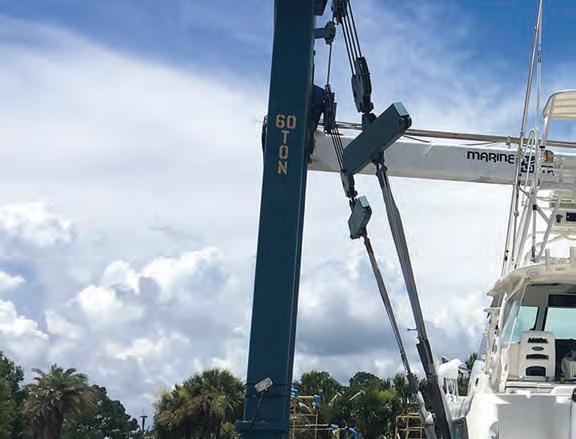

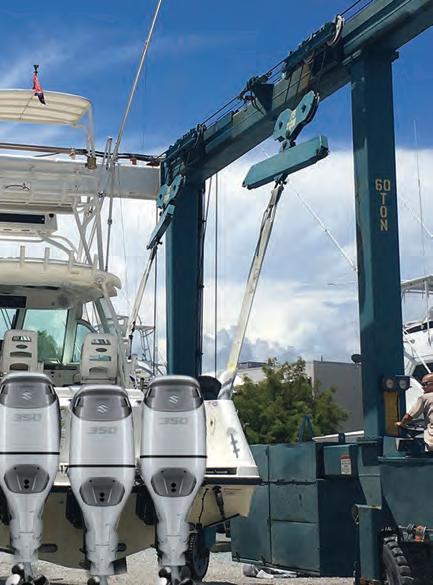












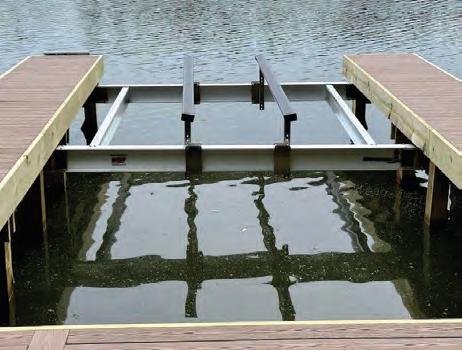
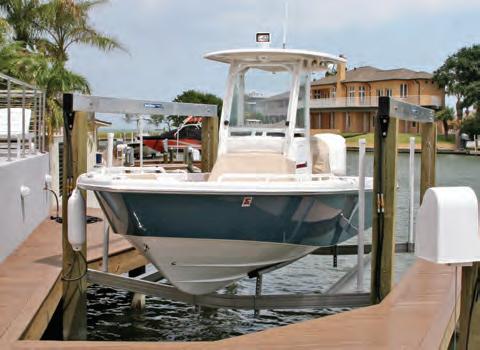



ShoreStation hydraulic boat lifts are a reliable choice for coastal residents and boating enthusiasts alike. Their strong construction, made with corrosion-resistant materials, allows them to withstand harsh environmental conditions, including sun, storms, and saltwater damage. ShoreStation provides a steadfast solution for protecting waterfront investments, ofering peace of mind to owners in the Sunshine State.
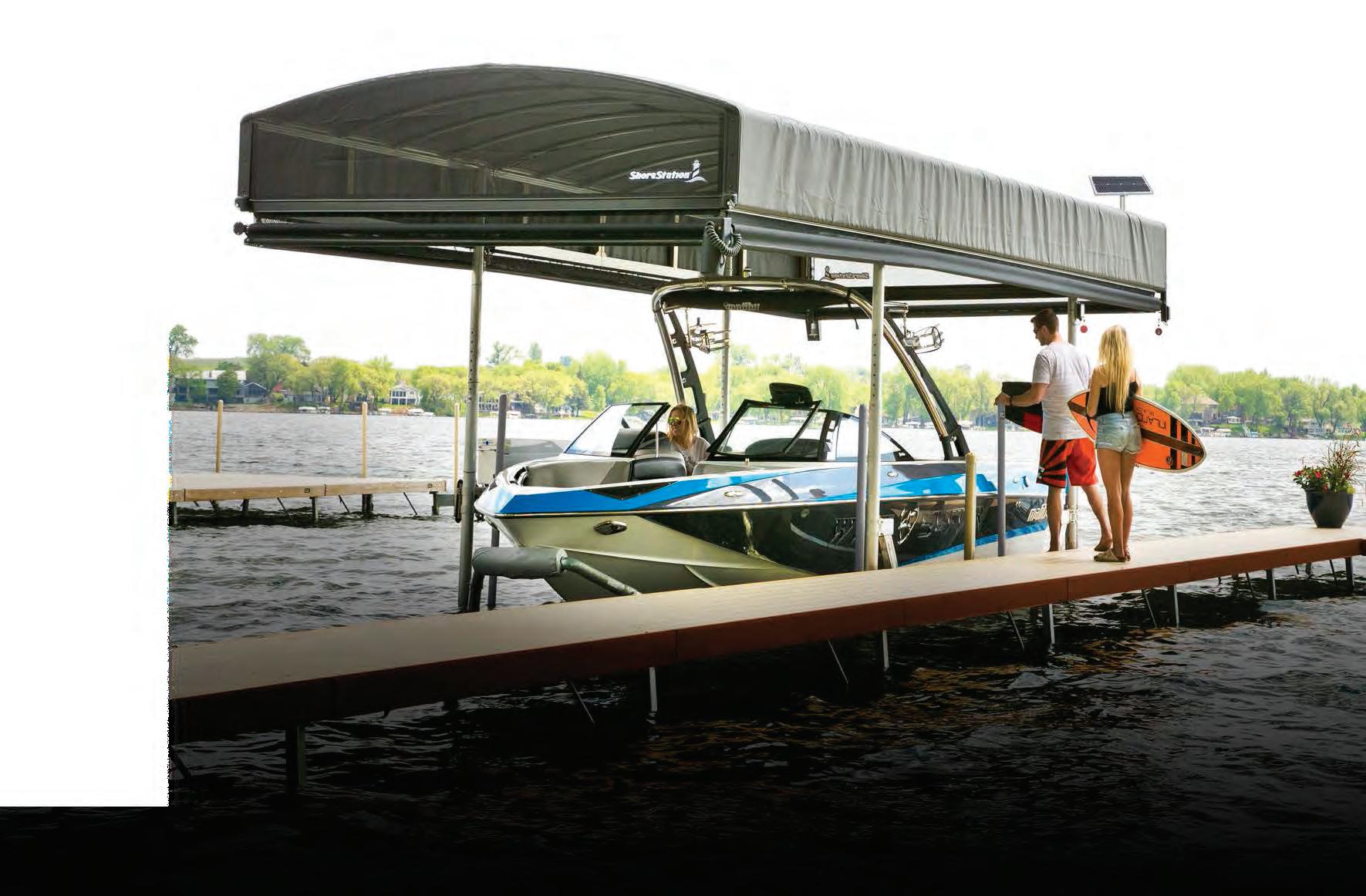
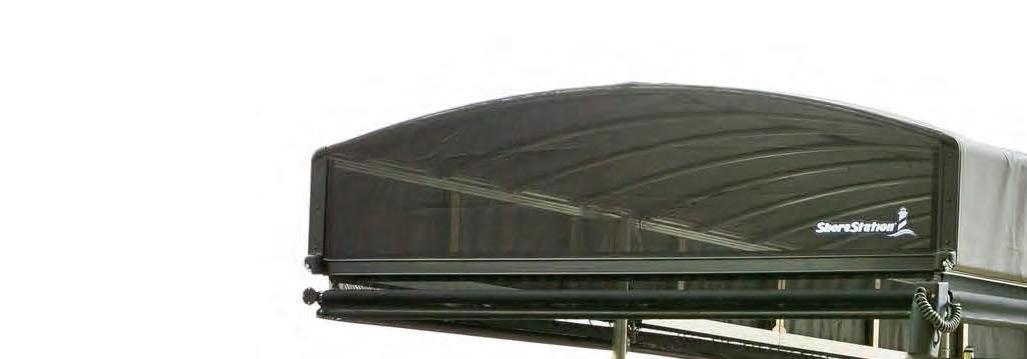

 No Profle Boat Lift
Four Piling Boat Lift
No Profle Boat Lift
Four Piling Boat Lift

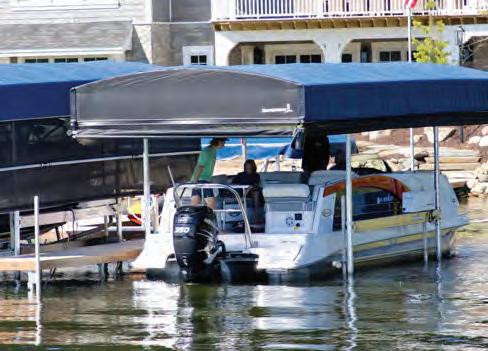
Equipped with exceptional weather resistant fabric and breathable SunTex 80 woven mesh ends for maximum protection and durability,

Made from the highest quality materials, our innovative hydraulic boat lift is one of the fastest and safest lifts on the market today. When you have a hydraulic lift, there’s no need to worry about wind and waves getting in your way. This lift will give you confdence to safely land and secure your boat in less-than-ideal conditions.
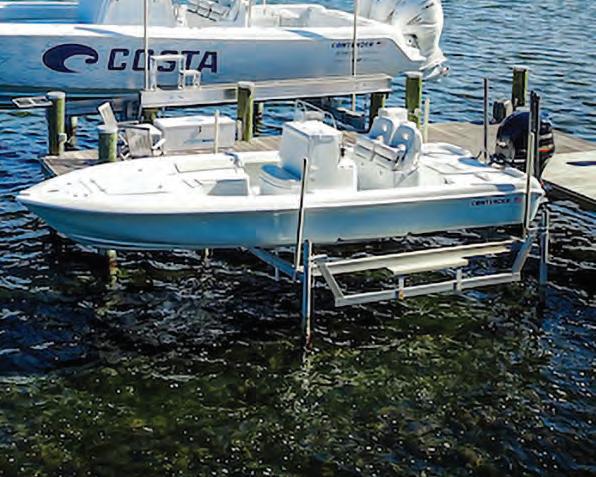
Never miss another moment on the water. Power your lift with clean, free solar power. Our speedy 20 watt charger features solar regulator drainage protection, saving your battery from permanent damage caused by overcharging.



Remember the frst time you went fshing for real? For many of us, the earliest trips elicit memories of a blue plastic container of red wigglers, a red-and-white plastic bobber and the ripe muddy fsh smell of an active bluegill bed. But that’s not what I’m talking about. I’m talking about the frst time you went fshing for real.
Maybe it was the year you were fnally allowed on the annual charter trip? Or perhaps it was the long-planned bass fshing weekend with Grandpa? Whatever it was, the person who took you decided you were ready to grow beyond the pushbutton-reel stage of fshing. It was on that trip when you became one of the crew instead of the kid who stayed home with mom.
Remember gathering your gear in anticipation? Remember waking up throughout the night and checking the clock to make sure you didn’t sleep through the alarm?
Jackson Willer, 9, of Melbourne, Fla., recently experienced his frst for-real fshing trip. Really, Jackson has fshed most of his life. His frst fsh was a jack crevalle caught with his Pop-Pop, Chris Willer, and his Mimi, Joann Willer, when he was 3 years old. But the Willer men are saltwater people, and when Jackson’s older cousin Ryan Willer, 21, told him to be ready early the next morning because they were going fshing, it was something new and exciting… his frst trip as one of the boys.
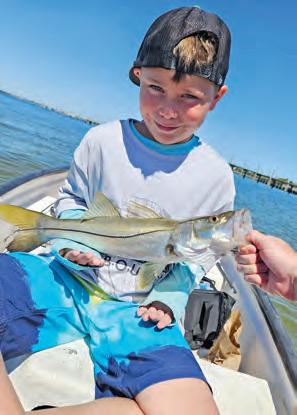
In the morning, before Ryan and Jackson lef for Sebastian Inlet, Pop-Pop pulled a special surprise from the back of his truck. He handed the 9-year-old a Penn 450SS mounted on an Ugly Stik. With freshwater wash downs and occasional cleaning, these vintage reels spin smoothly for decades. Chris (aka Pop-Pop) had been fshing this one since he bought it in the 1980s.
“I’m going to take care of it for as long as I possibly can,” said Jackson
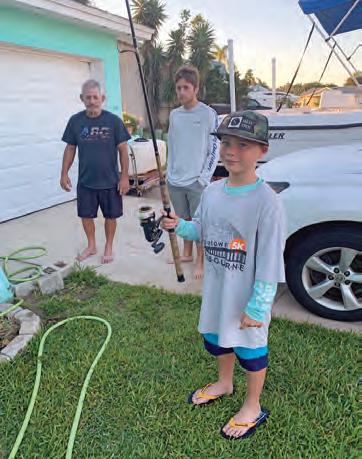
on receiving the gif. “It feels really special. He was the one that taught me how to use a shing rod and all that stuf.”
So…armed with the rod and reel and a tank of live shrimp, Jackson and Ryan fshing for “I thought, there he goes. He’s running with the pack now. He doesn’t need us anymore,” said Joann (aka Mimi).
It wasn’t exactly a jam-up day on the water, but that’s fshing, and Jackson had fun.
“First I caught a redfsh, and then I caught a snook,” Jackson said. “It was pretty fun trying to reel it in and everything. It was hard and it was fun.” Jackson also said he doesn’t know when the next trip is, but he’s excited.
And that’s the whole point. Even if it’s just another day on the water for you, remember that the kid you’re taking was likely lying awake last night seeing visions of monster fsh and epic drag-peeling battles.
If you’ve got a great fshing story to tell, email us at editorial@coastalanglermagazine.com.
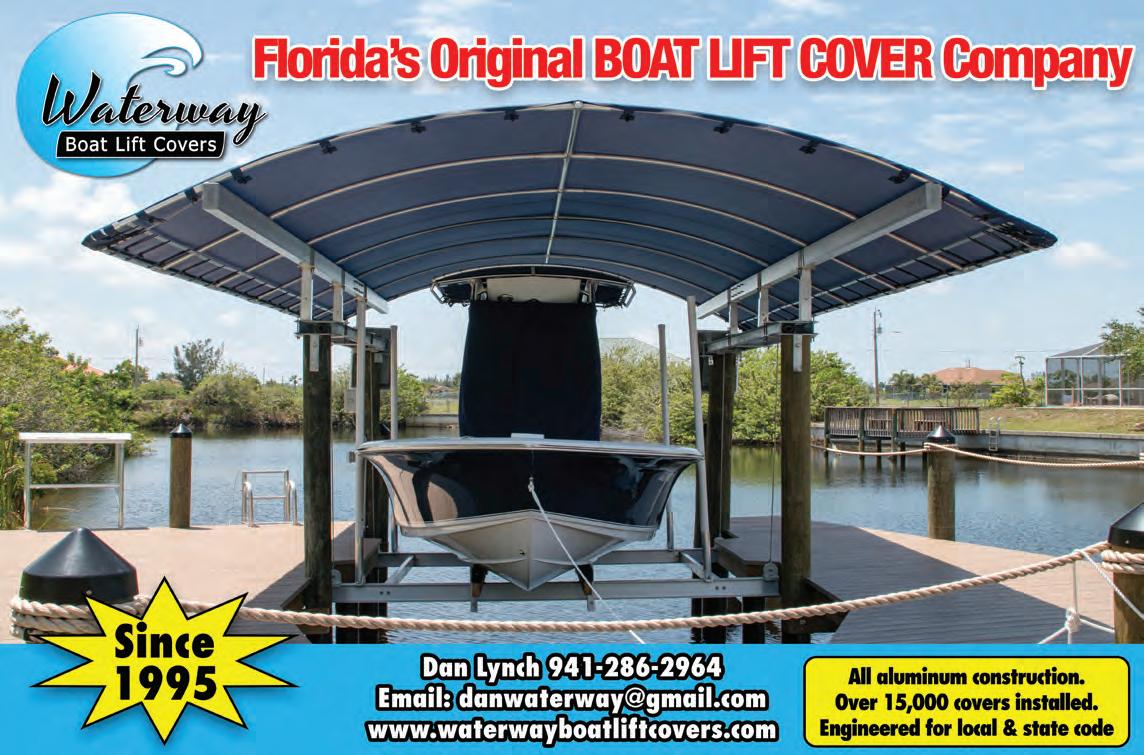
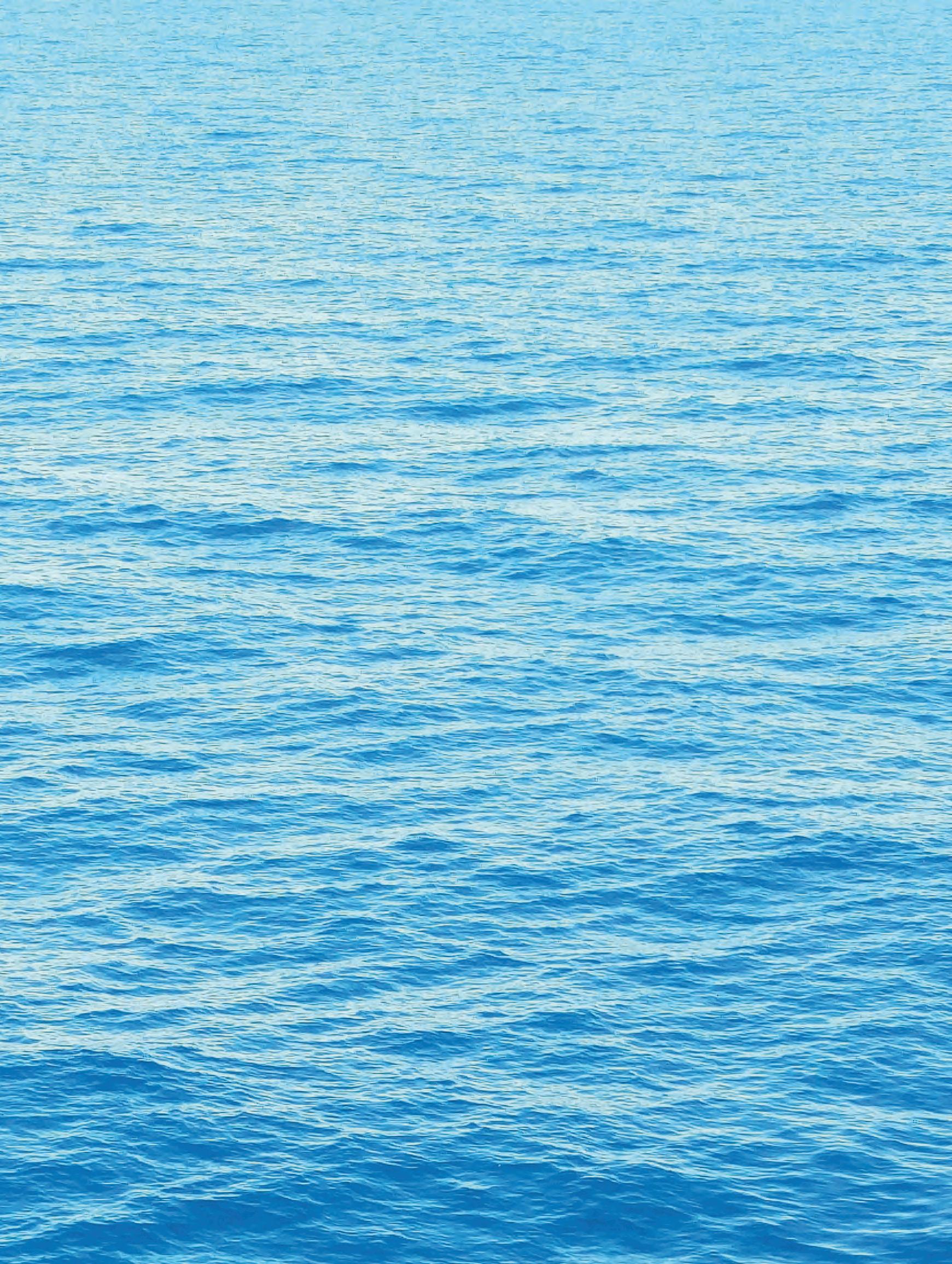

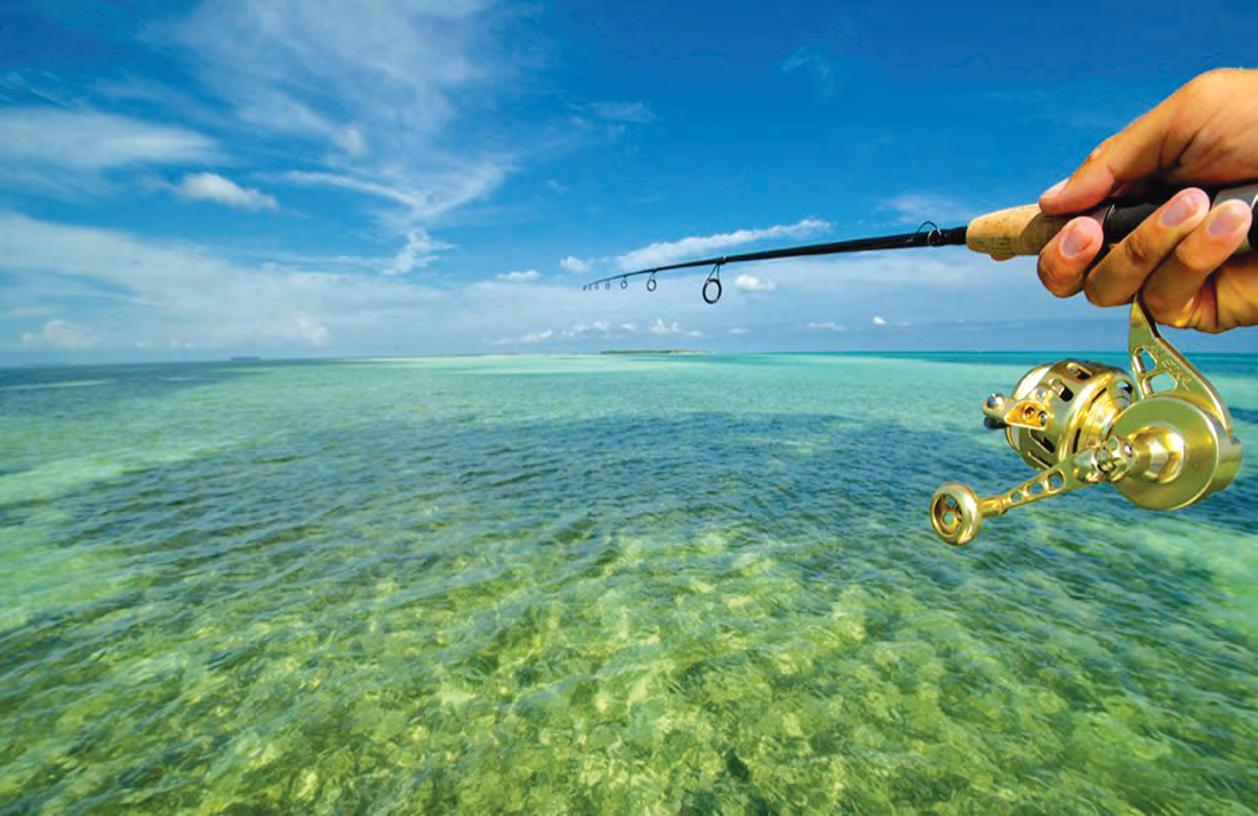
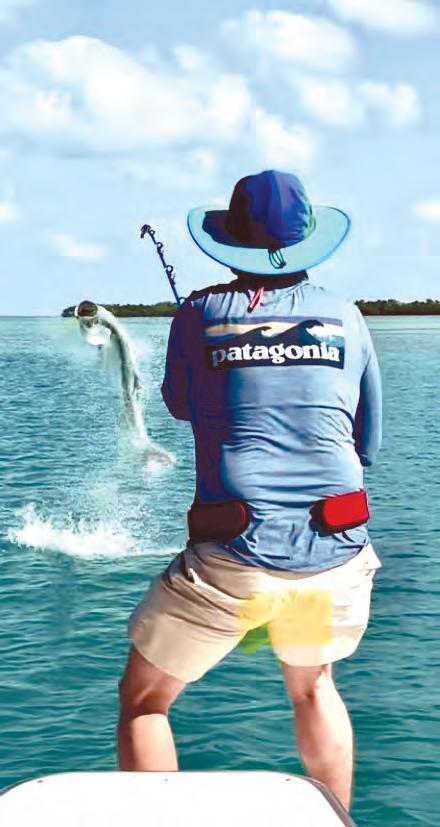

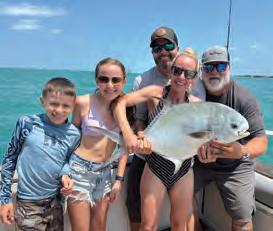
The fishing around the Islamorada area has been steady with lots of offshore Captains reporting a good bite of mahi mahi out in the 500-1500ft range and a few swordfish being caught, however, lately my fishing has been much closer to the bridges or the backcountry. Tarpon have been on their annual migration through the waters South Florida and The Florida Keys, so it’s hard for me to fish for anything else while they’re in town. As we all know, it is starting to heat up to our summer temperatures, and after years of baking in the sun, I decided to change it up a bit and trade in my boat for one with a T-top. It’s been a bit of a learning curve to navigate through the bridges while chasing a jumping tarpon, and while trying not to scratch the new 26’ Contender but well worth it to enjoy the shade while watching the baits.
The guys at GTB boat sales in Key Largo took good care of me and I can’t thank them enough for the easy transition into the new boat. Below is a photo of it so if you see me on the water, please feel free to stop by to say hello! The fishing around the bridges and backcountry has been steady for the tarpon and my friends and I have been catching them pretty regularly out on the flats. Catching tarpon is definitely a challenge and it takes a lot of skill. If you’re looking to catch a silver king before the season is over, it is time to get out there now. Not sure how or want to learn how, come out with me this month as I still have some dates open, and I’ll show you how we do it! Just drop me a line or email and let’s set up a date on your boat or mine while the tarpon are still in town!
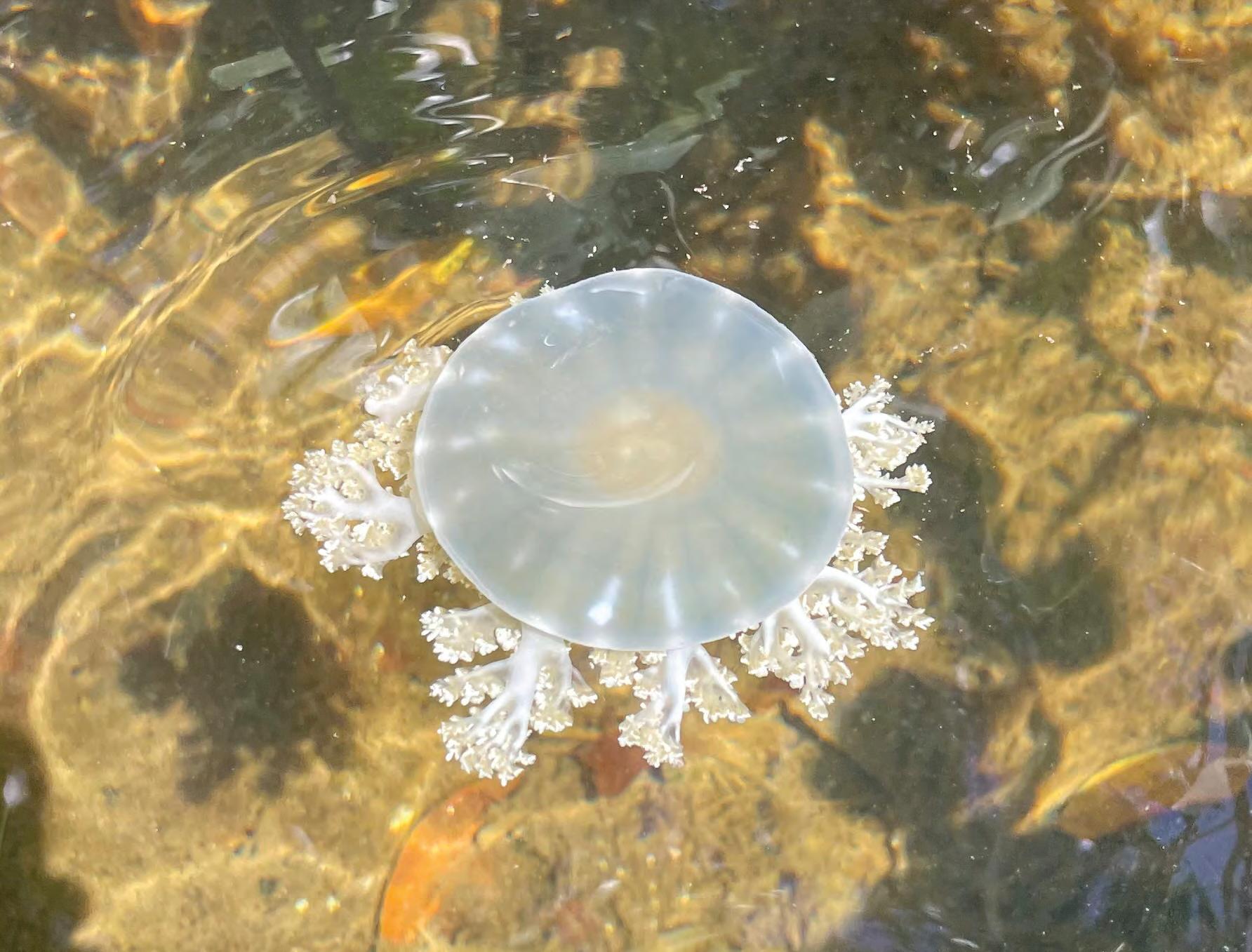
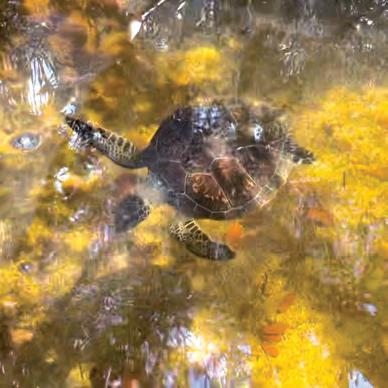
The beautiful little chain of islands we call the Florida Keys, and I call home, is special for so many reasons. People come here from all over the world to SCUBA dive, snorkel, and chase those amazing sportfish that are on their bucket list. Everyone loves the dolphins that will play and jump in the wake of the boat and the manatees that will hang out at the docks. But does anyone really think about the little things that make our tropical paradise special? Well, I love the little things. Spending almost every day on and in the water has its perks. The best perk is when you are out there day after day like me it gives you much more opportunity to see those amazing little things.
The cassiopeia jellyfish, who is named for the cassiopeia constellation, is a unique jellyfish that has taken on the nickname of the upside-down jellyfish. On the ocean’s floor, this jellyfish looks like a flower. They are said to release a gooey cloud of autopilot stingers to make up for their lack of tentacles, but I teach tourists about these jellyfish all the time and the slight bit of slime that leave your hands kind of tingly after holding them rinses away easily with a little water. When they are not on the ocean’s floor, they come to the surface, turn upside down and pulsate across the water. By floating upside down, it exposes the algae inside of it to the sun and this extraordinary jellyfish can survive off the byproducts of this algae making it so incredibly self-sustaining and unique.
The green sea turtle is another treat. It’s a bit smaller than most of the oth-
er species of sea turtles and its diet strictly consists of only seagrass. The seagrass diet gives it a green fatty section beneath its carapace, and the actual shell is dark green and black, making it a beautiful sight to see. These turtles will swim around my kayak as if they are as curious of me as I am of them. Beautiful and graceful, they are a sight to see.
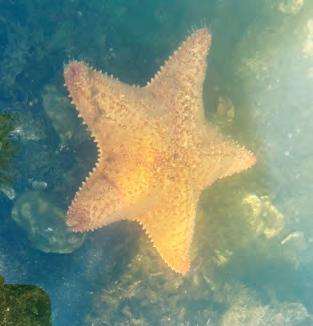
Then there is the giant orange starfish that hung out at my dock, inching a bit closer to the seawall every day. This starfish was so brightly colored and as big as a dinner plate. I enjoyed the sight of it for almost a week until I came in one day and, sadly, it had moved on.
My favorite of the little things of recent is the seahorse. I had not seen a seahorse down here for some years, and suddenly they are being seen regularly. These beautiful creatures don’t have true stomachs, but a digestive tube that requires them to constantly eat to get their nutrients. Their tube-shaped nose serves as a vacuum to scoop up their food. With their beautiful horse shaped heads giving them their name and a beautiful tail designed to wrap around vegetation and anchor them in place, they are a magnificent sight to behold.
If you’re planning a great summer trip to the keys, book an excursion with me and we will go look for all of the amazing little things that will change your perspective of our oceans forever.

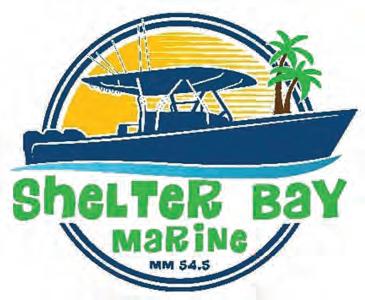







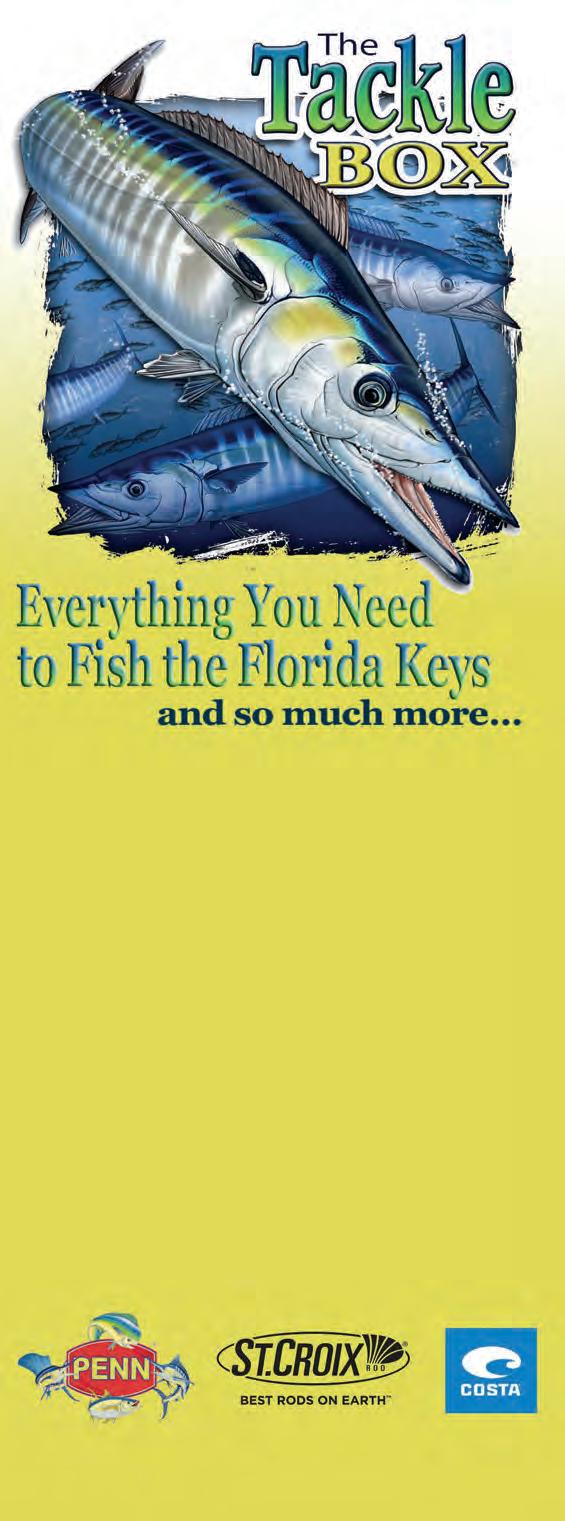
 By: Capt. Bruce Andersen
By: Capt. Bruce Andersen
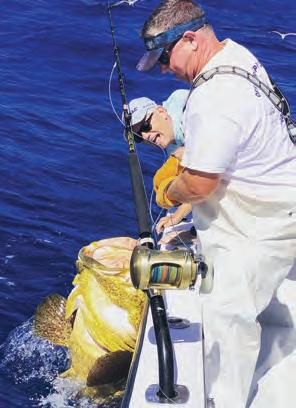
When you’re fishing on the reef in the Florida Keys, two things can definitely be true. First, if there is a lot of life out there, and second, that you can’t forget that it’s a fish eat fish world. Often one of the biggest challenges in catching snapper on the reef, is getting them up fast enough to keep them away from all the predators that are looking to steal them from you. Sometimes losing snapper after snapper to the predators can be very frustrating, but it could also make for some great action.
On a recent fishing charter aboard the Captain Easy, my good customer Scott from North Carolina had mentioned to me that his friends coming out with us that day had never caught anything really big before and if possible, he wouldn’t mind trying to catch a shark or something big that day. As usual, there had been quite a few sharks out on the reef interfering with our yellowtail fishing, so I brought the heavy tackle out with us hoping to get some payback on a few of the sharks that had been bothering us for weeks.
Everything came together perfectly that day. We managed to catch our limit of yellowtail snapper fairly easily and as we got close to the snapper limit, the sharks started showing up. Chasing a few of the yellowtail snapper right up to the boat and taking a few of them from us. I dropped a bonita that we had caught earlier that day down on the shark rig and not 30 seconds later we were hooked up to something big. I assumed at first it was a shark, but it did seem to be fight ing weird for a shark though and after about 20 minutes a very large goliath grouper probably in the 150-to-200-pound range came up from the deep. The guys were ecstatic! They had never caught anything that big before and were really impressed. After safely releasing the grouper, I redeployed the shark rig and not two minutes later we were hooked up again; This time to a large bull shark, probably about a 300 pounder. He fought for about 30 minutes until we tired him out enough to pull him up to the boat and get some great pictures be fore releasing him. Everyone on board was psyched! They had caught two of the biggest fish of their lives in a span of about an hour. We picked up the anchor and headed home with a cooler full of yellowtail snapper and some great pictures and memories of some sea monsters. Some days everything just works out perfectly. — www.captaineasycharters.com You
reach Captain Bruce Andersen at Capt.
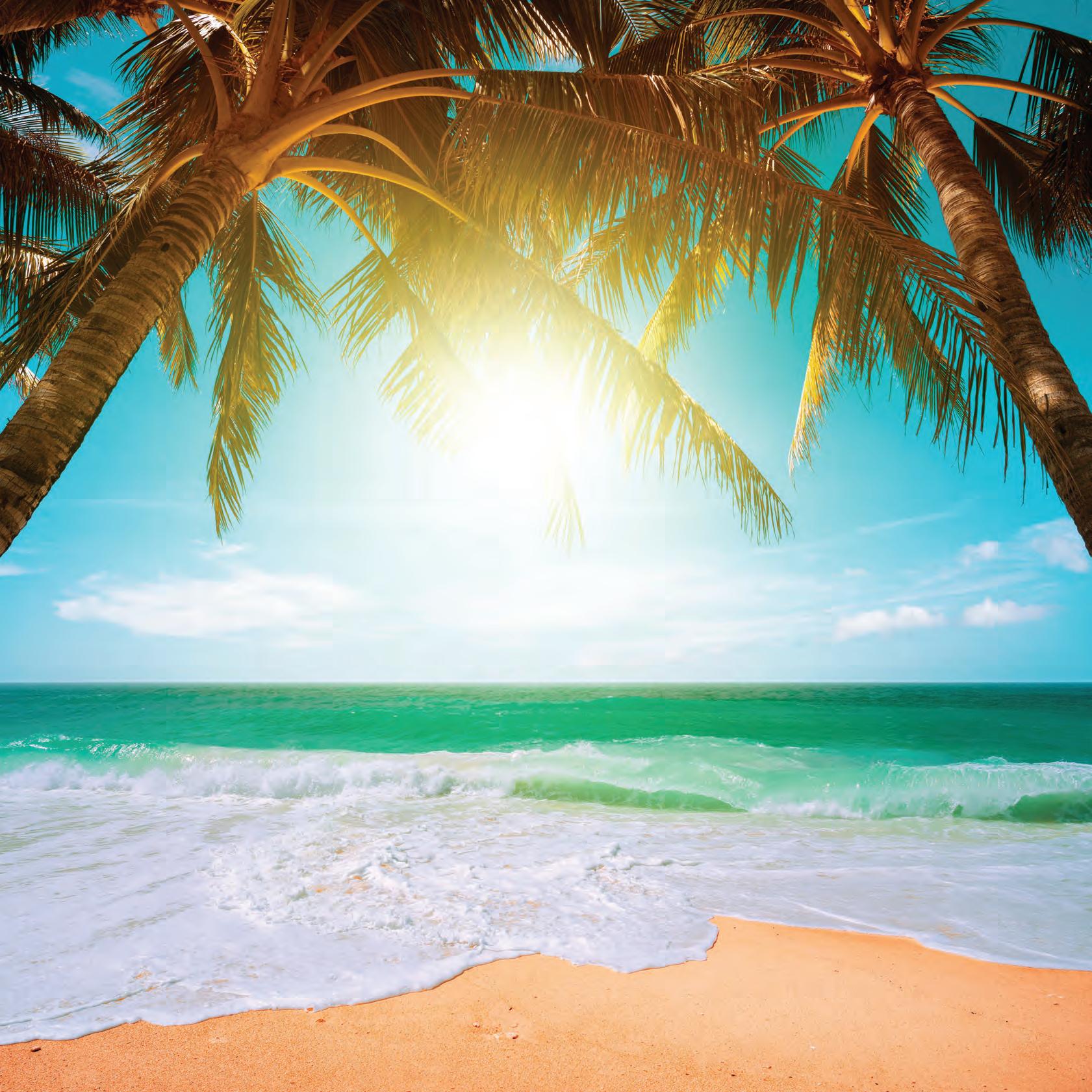
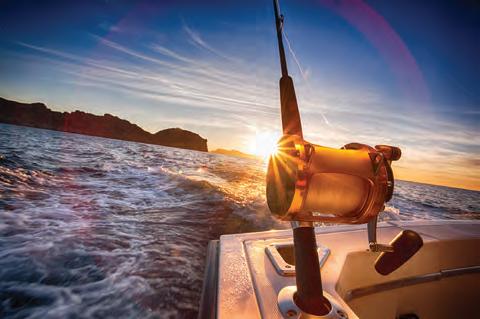
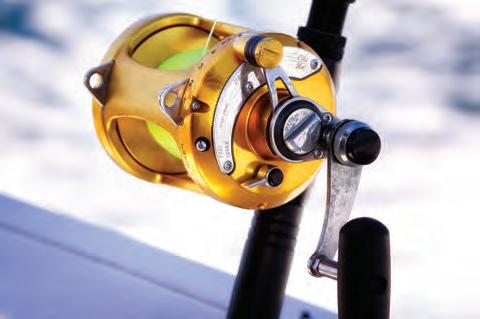

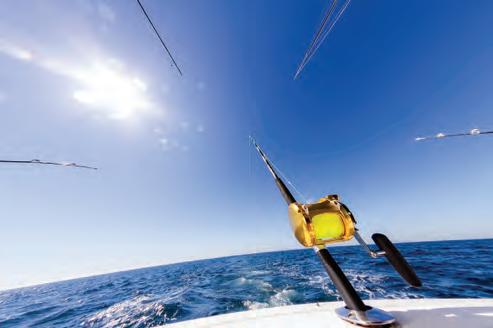


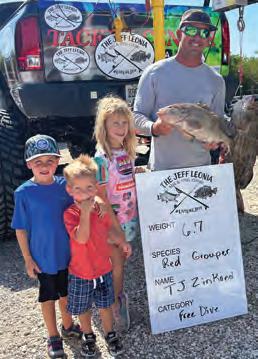 By: Capt. Tony Young
By: Capt. Tony Young
With a snap of our fingers, June is here and we are full force into our summer fishery. Looking back on May, the 1st of the month is a long-anticipated day for anglers and divers in south Florida. It is a holiday, we all take off work, pull kids out of school, and load up the boats for opening day of grouper and hogfish! For the past five years, May 1st has also held a more special meaning to our community, as it marks the annual Jeff Leonia Reel and Steel Classic. A tournament honoring the life of a close friend to us all, Captain Jeff Leonia.
There are no right words to describe Jeff, other than he was the man that most men aspire to be. He was a rock in our community and would do anything for anyone, no questions asked. Jeff was full of joy, always smiling, he could catch any fish and dive any depth. Most importantly, Jeff had a heart of gold. He loved his family, his friends, and his community more than anything. He was a beam of light for us all to follow and without him now, it often feels like we are navigating in the dark. At the age of 24, Jeff tragically passed away in a car accident. He lived a life that was more full at that age then most men could even dream to accomplish in 100 years. Jeff’s life and his legacy as a captain in the Florida Keys is remembered each year on May 1st. The annual Jeff Leonia Reel and Steel Classic is a tournament like no other, all in Jeff’s honor with all proceeds going toward kids dive and fishing camps throughout the Florida Keys!
In the beginning, Jeff’s annual tournament was a Facebook group of locals shooting and catching fish with online submissions. Today, the tournament has grown with watermen from all over the country traveling to compete. There are divisions for women, men, scuba spearfisherman, freedive spearfisherman, anglers, and most importantly for the kids! The community pulls together for some of the most amazing prizes, with all proceeds going back to the community. The rules are simple, it is an individual tournament where you shoot or catch the biggest Grouper and Hogfish you can find. You get one point per pound, weighing one grouper and one hogfish. The largest fish that generates the most points wins! This year we added a calcutta, giving divers and anglers a fun way
to up the competition. All kids enter for free and are allowed to weigh any fish for a prize. The food is top notch and the beer is cold, just like Jeff would have it. Although there are some great prizes and local bragging rights that keep the competition fierce. The tournament is so much more. For one day out of the year, Jeff’s family, friends, and community all come together to honor him. We share stories, tears, smiles, laughs, and for just this one day we feel like Jeff is still with us.
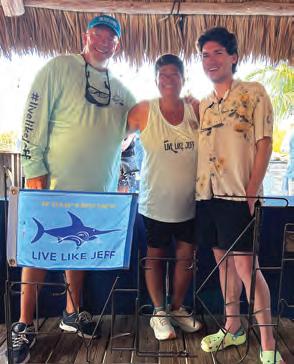

Jeff’s family started the saying “Live Like Jeff”. This simple phrase is a reminder for us all to step back and take inventory on our blessings. Slow down and enjoy every aspect of the journey you are on and the life you are living. Live Like Jeff is now a nonprofit organization, run by Jeff’s family, that takes tournament proceeds and generous donations to support kids camps throughout the keys. The Live Like Jeff Foundation gets kids on the water that would otherwise not have the opportunity. They get scuba certified, participate in reef cleanups, plant coral, they learn to fish, throw cast nets, you name it the camps teach it!
Thank you to everyone that supported this year’s tournament, we all truly look forward to this day each year! Mark your calendars and remember the date May 1st, this is the day we all gather to celebrate Jeff’s life and put some big fish on the boat in his honor! No matter where you are in your life, in your journey, remember to “Live Like Jeff”. We will see you next year on May 1st, for the 6th annual Jeff Leonia Reel and Steel Classic!

— Capt. Tony Young can be reached at Forever Young Spearfishing in Islamorada, FL at 305-680-8879



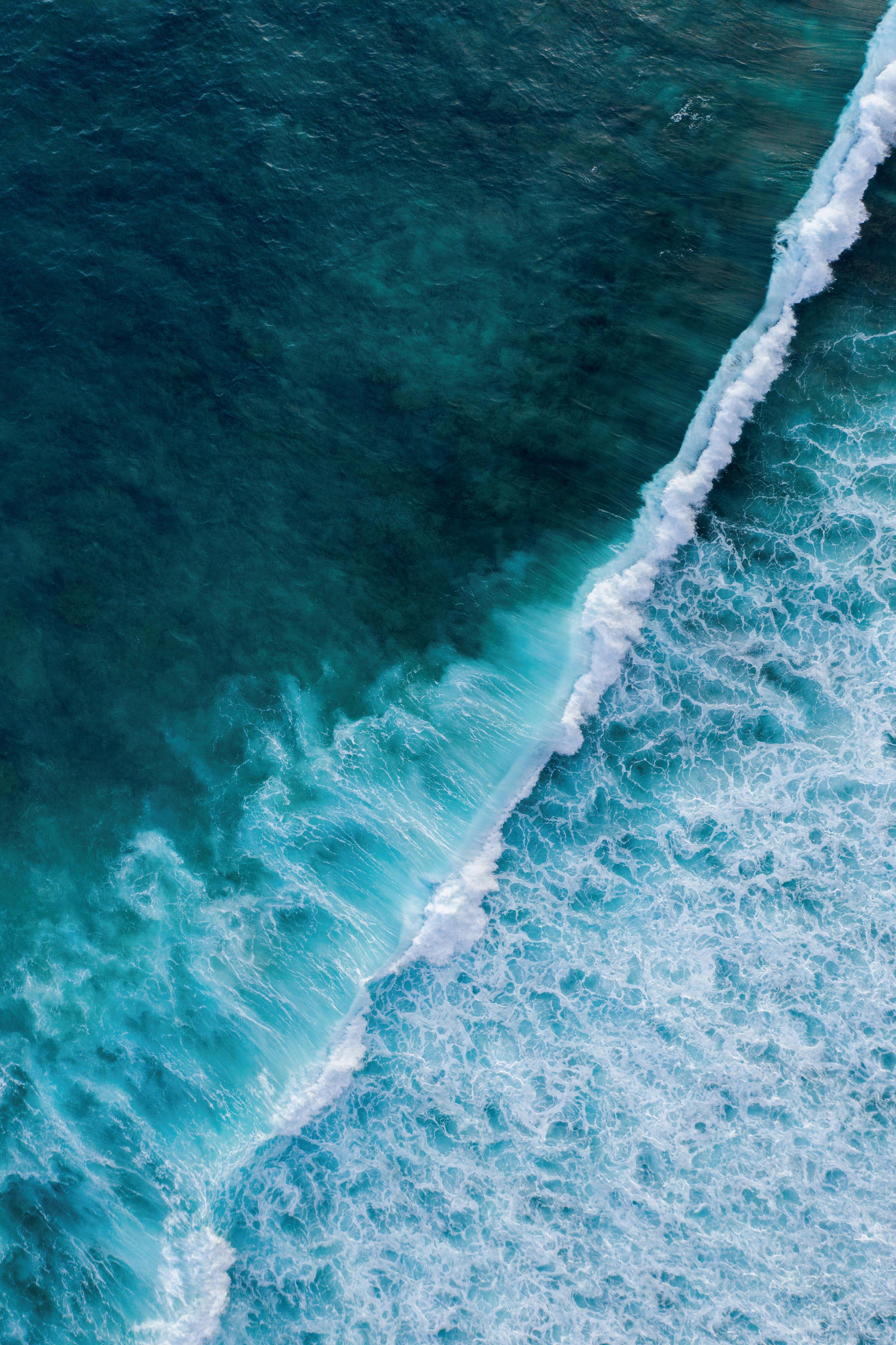








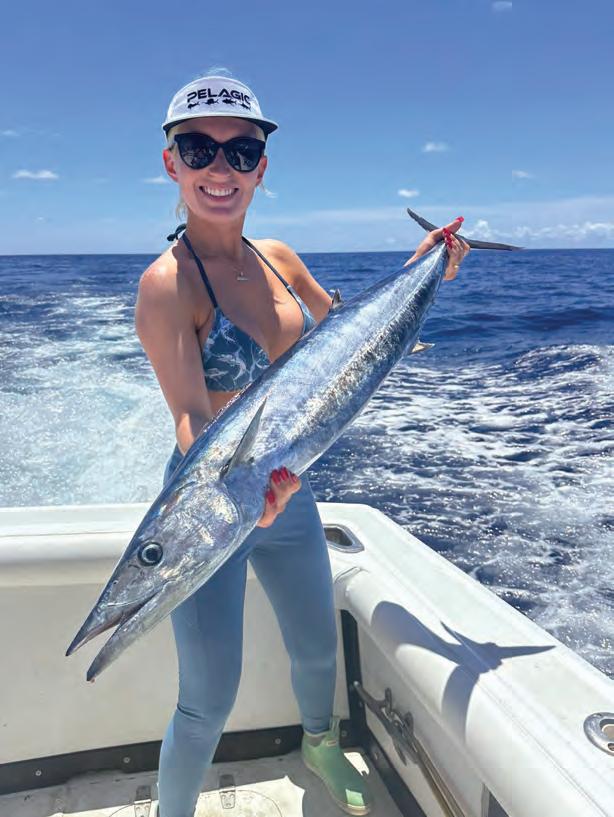
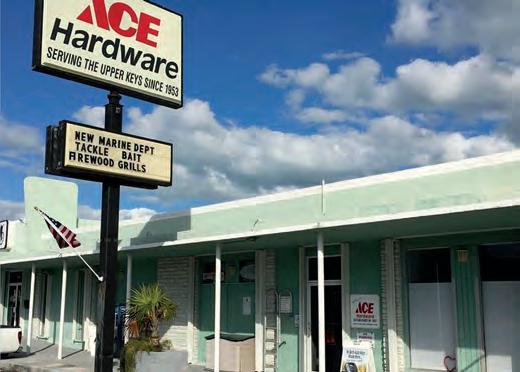 By: Jessica Harris Hendrie
By: Jessica Harris Hendrie
the perfect day of fishing in Puerto Rico. It’s starts early with a golden sunrise and bait jumping all around. You’re setting out from a little town where the locals are already out, preparing their boats for the day’s catch. The atmosphere is full of seasoned fisherman and salt. Your charter for the day is another local expert full of stories and tips. And you learn quickly that not many Floridians get taken on Puerto Rican charters. As you hop on the old Viking that will soon be retiring, you make a plan. You’ll be on a full ride to the deep sea where Marlin are abundant, Tuna are biting and the wahoo are chasing. The captain gets us through the sea with ease, breezing through in his flip flops and aged tan lines.
As you reach the prime fishing spot, that just may be a milk crate floating, the real fun begins. You let out your lines in hopes that one will pop off and shake like crazy… the wait is peaceful. You spark conversation with the captain and realize you have a lot in common. Then BOOM! There’s a line that popped off with a fish on! Your husband and the captain are shouting encouragement and maybe a few bad jokes but after a spirited struggle, you reel in a beautiful, blue wahoo gleaming in the sunlight. Fast forward, lunchtime fast approaches. And what better way to fish than to have a fresh meal with your catch? You get told that a nearby beach restaurant will cook it for you, but you can’t forget to say that the captain sent you.. you feel honored. The fish is grilled, seasoned with local spices and herbs making for a delicious meal and taste of victory. As the day ends, you head home with wonders of when you’ll be back for another beautiful day of fishing in Puerto Rico.









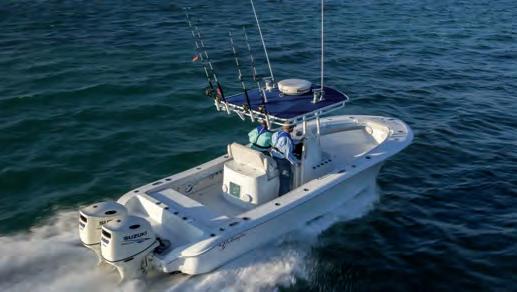
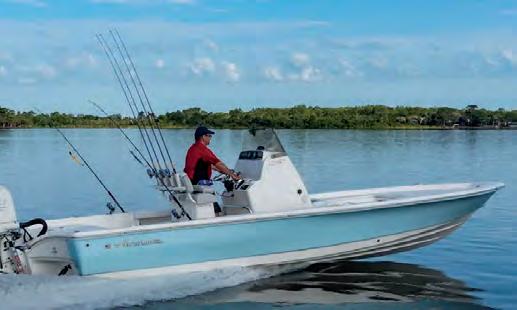


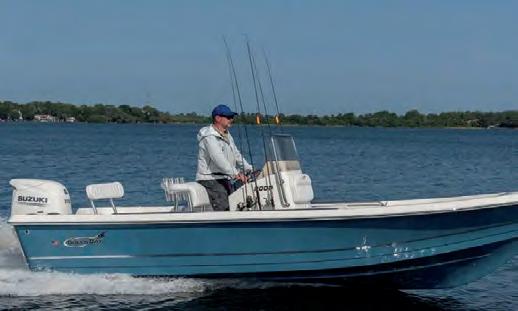

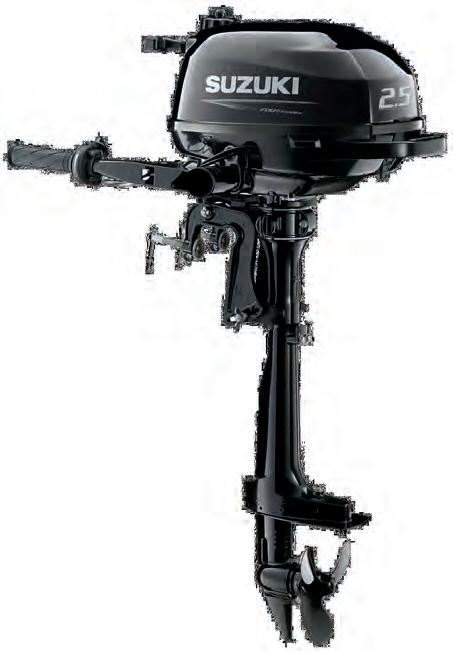
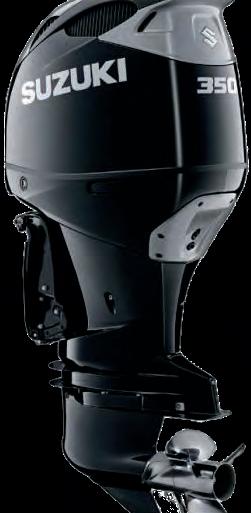
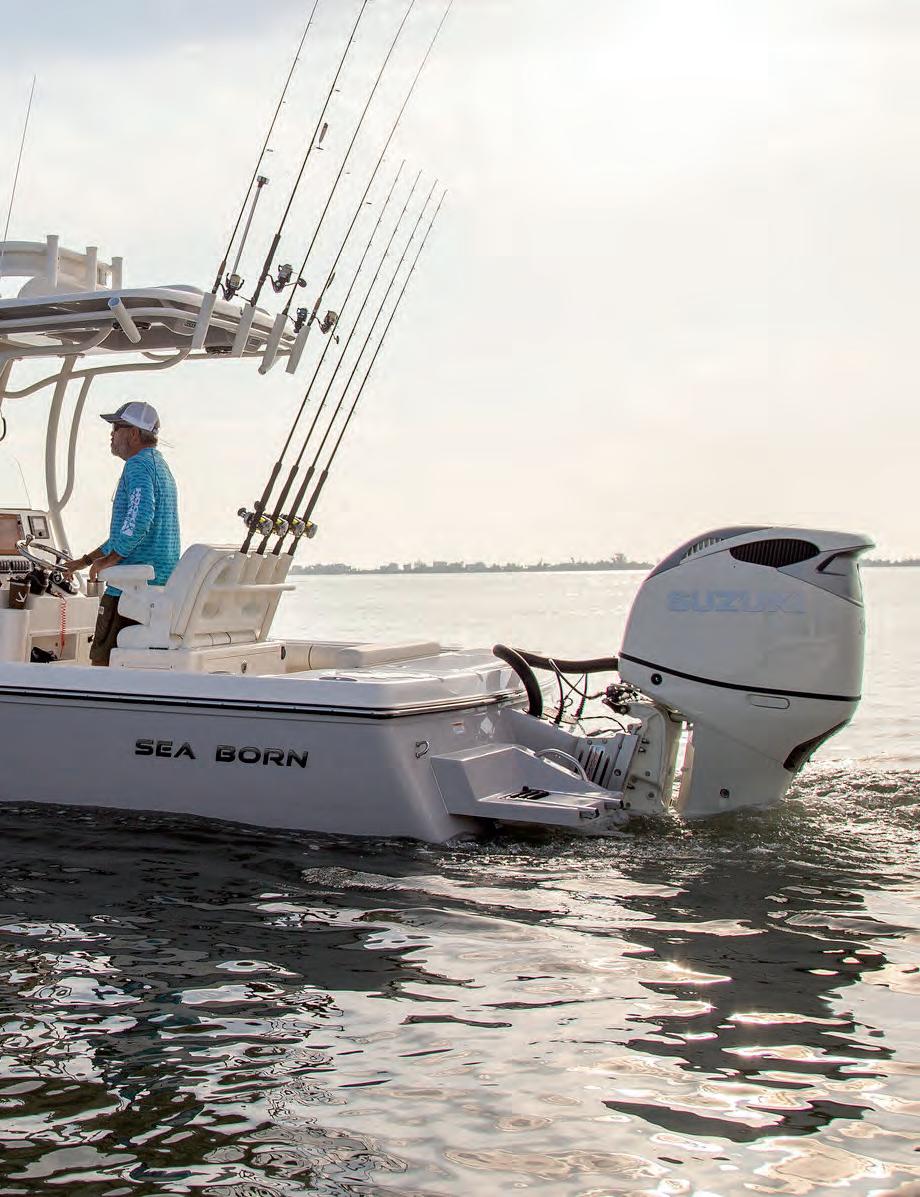
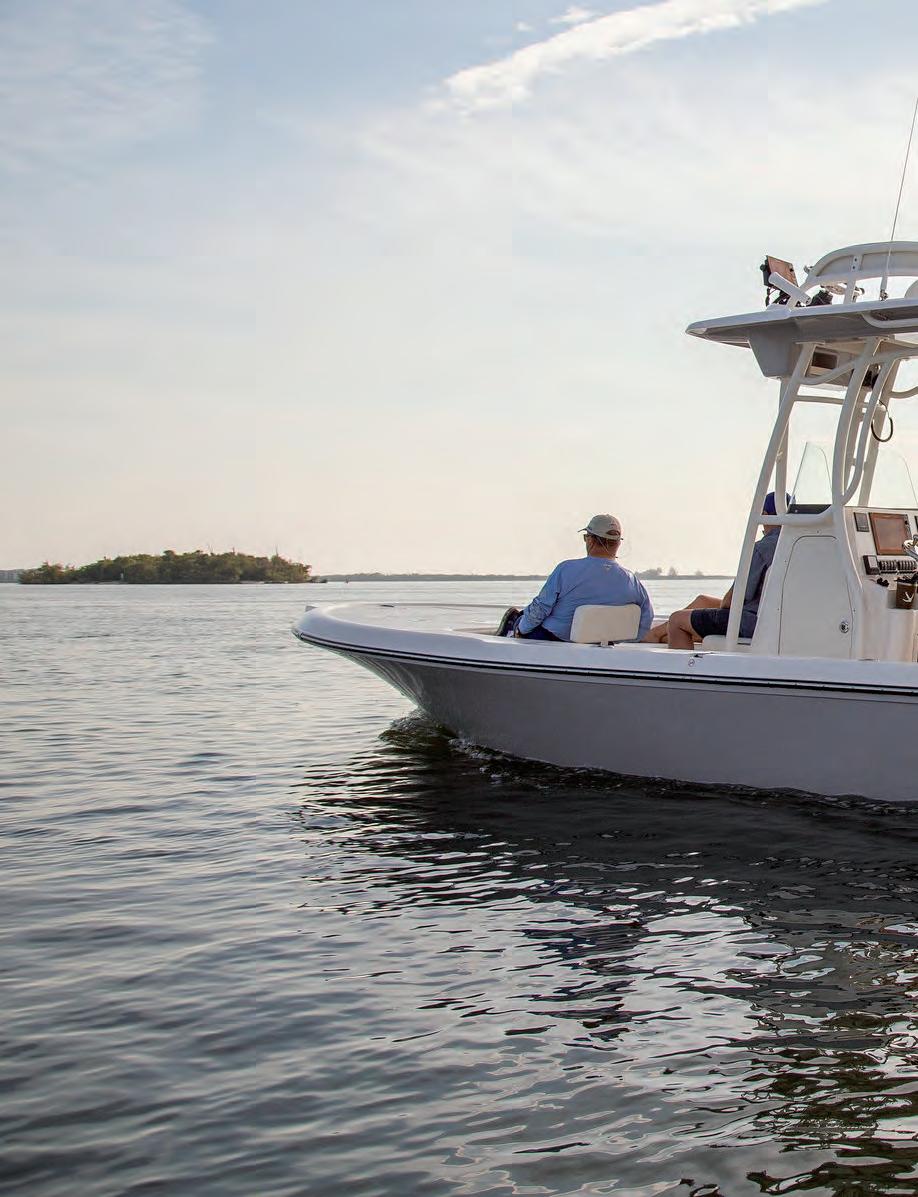


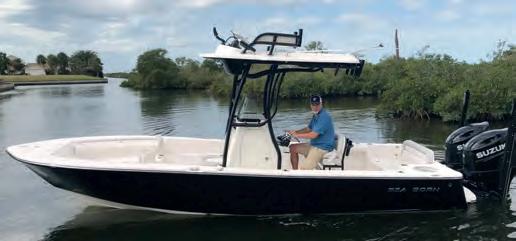
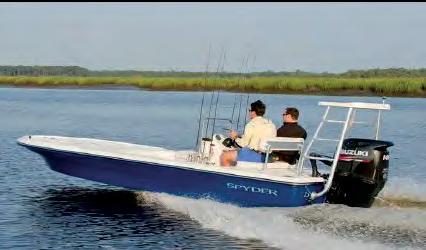
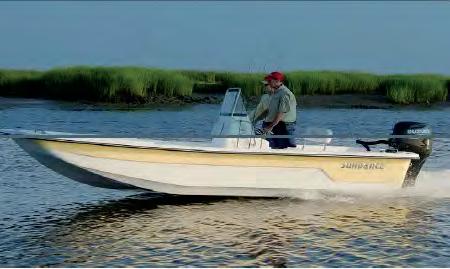

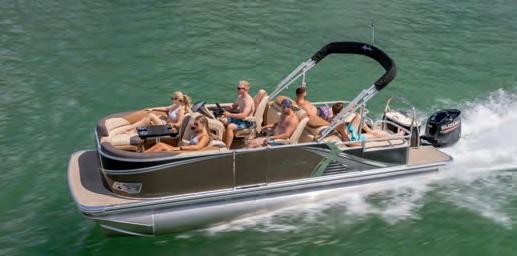

9
5
2
1
14
19
20
21
22
23
24
26
27 Thu 1:43 1.6 2:12 1.5 9:02 -0.1 9:26 0.0

6
2
1
26


Fishing is my passion, as it is for a lot of folks living in the Florida Keys, but I also enjoy recreating on the water, whether it’s snorkeling, diving or just soaking up the sun on my boat, and that’s where sandbars come into play.
If you’ve ever had the pleasure of an Atlantic Ocean view from the top of the Whale Harbor Channel Bridge in Islamorada, you’ve probably seen one of the most popular sandbar locations in all of the Keys. On just about any given weekend, weather permitting, the sandbar is host to dozens and dozens of boats with sun seekers and partiers onboard.
I’ve visited a few sandbar spots, but mostly from a respectable distance. The crowds are not really my bag, but I do enjoy the antics of those letting their hair down. You never know what you’re going to see during a sandbar event.
Before I cover locations, I think it wise to discuss rules. Yeah, I know, those
pesky things that always seem to crop up when you add boats or jet skis to water. First and foremost, the captain of a boat is not allowed to drink alcohol and the waters are patrolled by law enforcement.
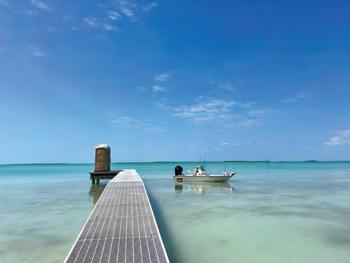
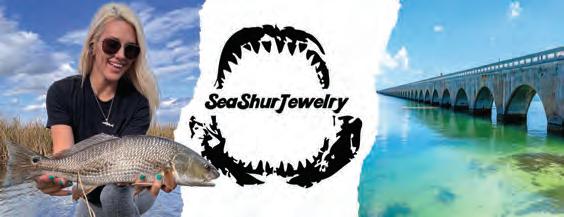
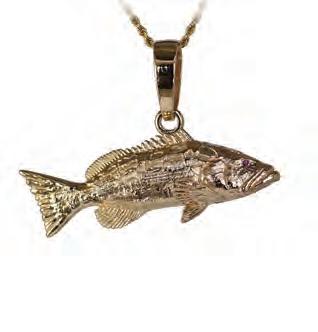
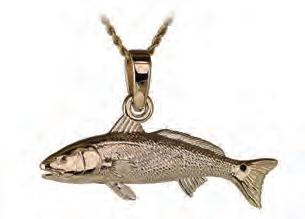


Florida Bay is very inviting, but the reality is almost the entire bay is included in the boundaries of Everglades National Park. Talk about rules. In most cases boaters are not allowed to leave the boat to wade or explore islands in the park with only a few exceptions.
Nest Key is one of those. It’s located in Florida Bay, north of where Key Largo and Tavernier meet. You are allowed to walk the island, camp there if the bugs aren’t too bad, and there’s also port-a-potties located at the dock. This is a popular sandbar spot with boaters but is in no way on the scale of the Islamorada sandbar.
Located just offshore of Key Largo is the Mosquito Bank Sandbar, which is actually made up of several bars. On weekends, when the winds aren’t blowing, it gets busy. The depth of the water runs from a few feet to almost 25 feet, and most boaters are there to swim and snorkel.
South of Islamorada you’ll find the Marathon Sandbar, also known as the Grassy Key Sandbar. This location is a beautiful series of bars ranging from no water to just a foot or two in depth.
If you’re lucky enough to stay at the Isla Bella Resort in Marathon, you can take a special charter with Conch Republic Marine Army at no charge, that starts with an eco-trash cleanup of nearby mangrove islands and then finishes with a visit to the sandbar. I really like this idea and I hope more resorts begin offering charters of this kind. As you progress down the island chain, you’ll find many other sandbar locations. There’s Content Keys, Marvin Key, Sand Key, and Boca Grande Key, just to name a few.
One thing to keep in mind, sandbars are accessible only by boat. Rentals are available, but not advised if you don’t know the local waters you are attempting to navigate. Running aground in the Keys can be very expensive. Your best bet is to find a sandbar charter and leave the driving to an experienced and sober captain. It’s not fun to come on vacation and leave with a citation!
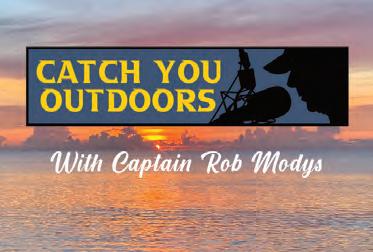
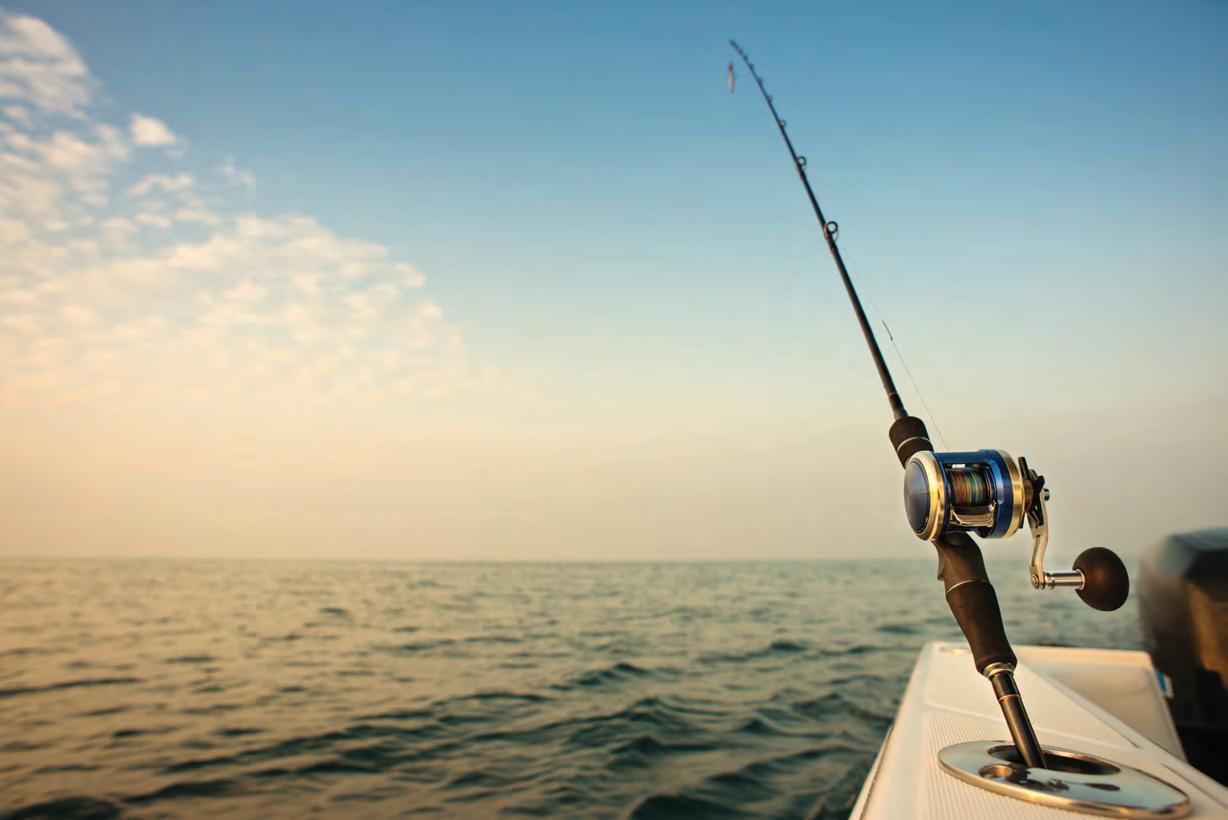





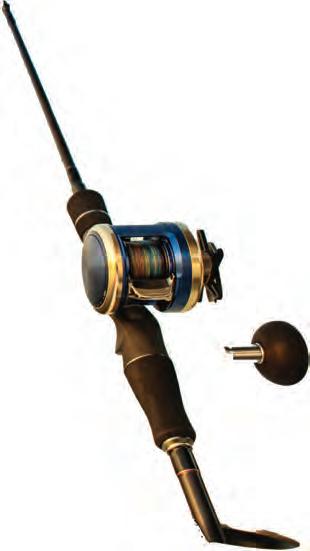



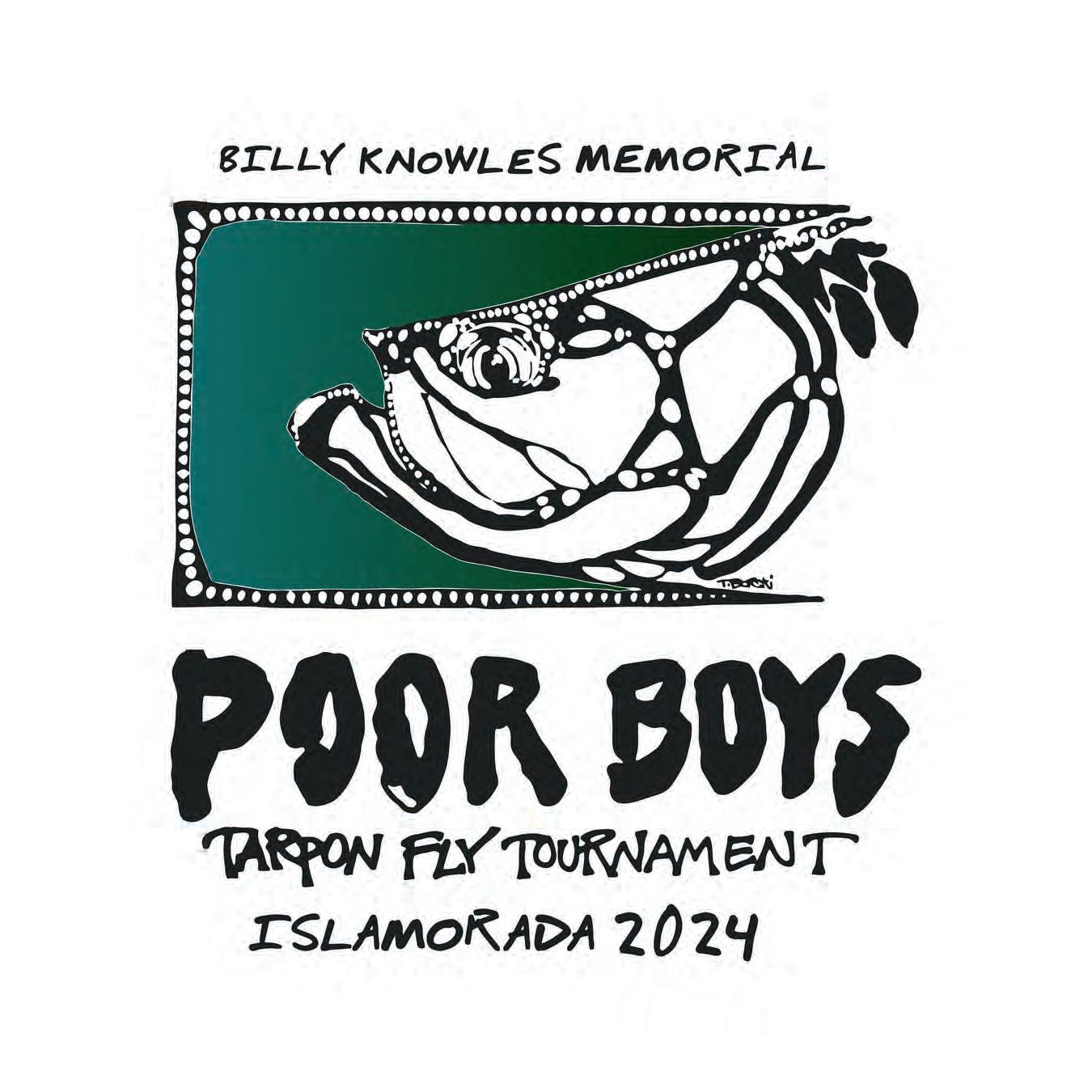




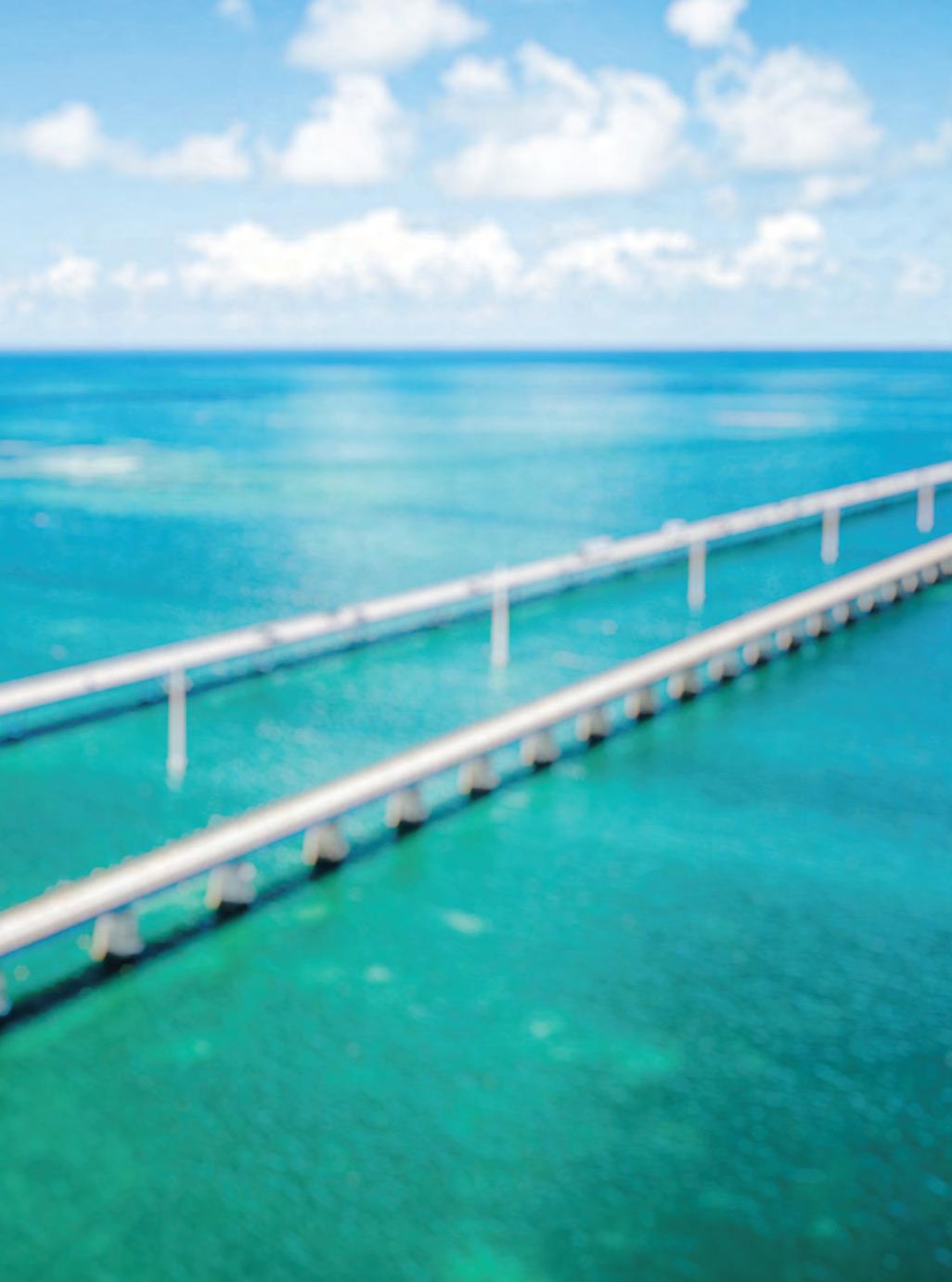


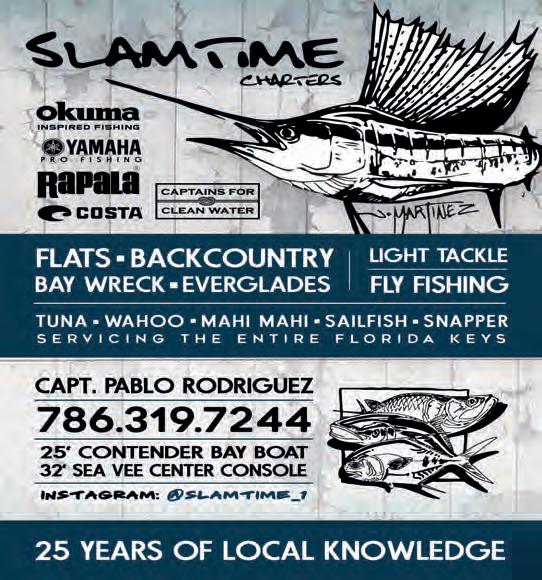




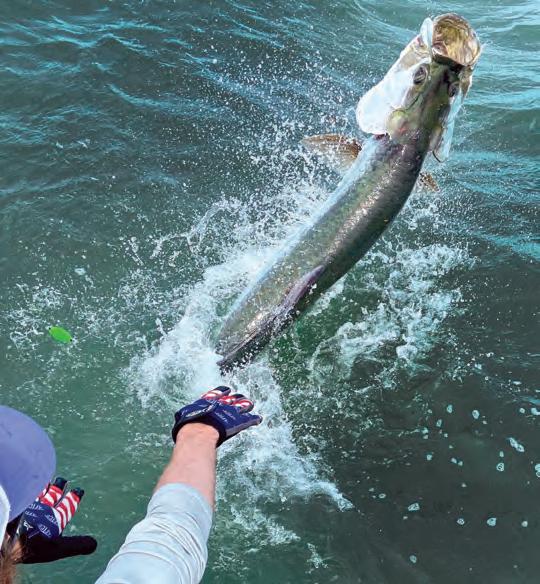


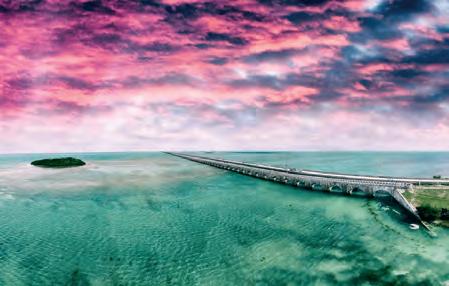
Thinking about taking fireworks out to the beach for an Independence Day celebration? Some things to keep in mind!
Although beachside fireworks shows are entertaining to people, the bursts of color and noise directly overhead can wreak havoc on coastal birds—especially for nesting species. After each fireworks explosion, birds may panic and fly from their nests, scattering the chicks and exposing them to predators and heat until their parents return. For this reason, it is better to attend a municipal firework show versus deploying store-bought fireworks on the beach.
Over the July Fourth weekend, Audubon Florida’s bird stewards will be out in full force at locations across the state, especially at barrier islands where boaters, anglers, and beach-nesting birds co-mingle. State or local law enforcement officers often pitch in to ensure coastal visitors learn about the rules of the beach as well as the birds.
In addition to many natural threats, human-related disturbances can cause adult birds to abandon their nests or chicks, which can ultimately lead to chicks starving, getting eaten by a predator, or overheating in the sun. By the Fourth of July weekend, many birds are re-nesting for their final opportunity to successfully raise young this season.
It’s not just birds – fireworks can disturb pets and increase trash on our beaches. Trash left behind from private fireworks becomes marine debris and is ingested by fish, sea turtles, and marine mammals. Together we can all Share the Shore!


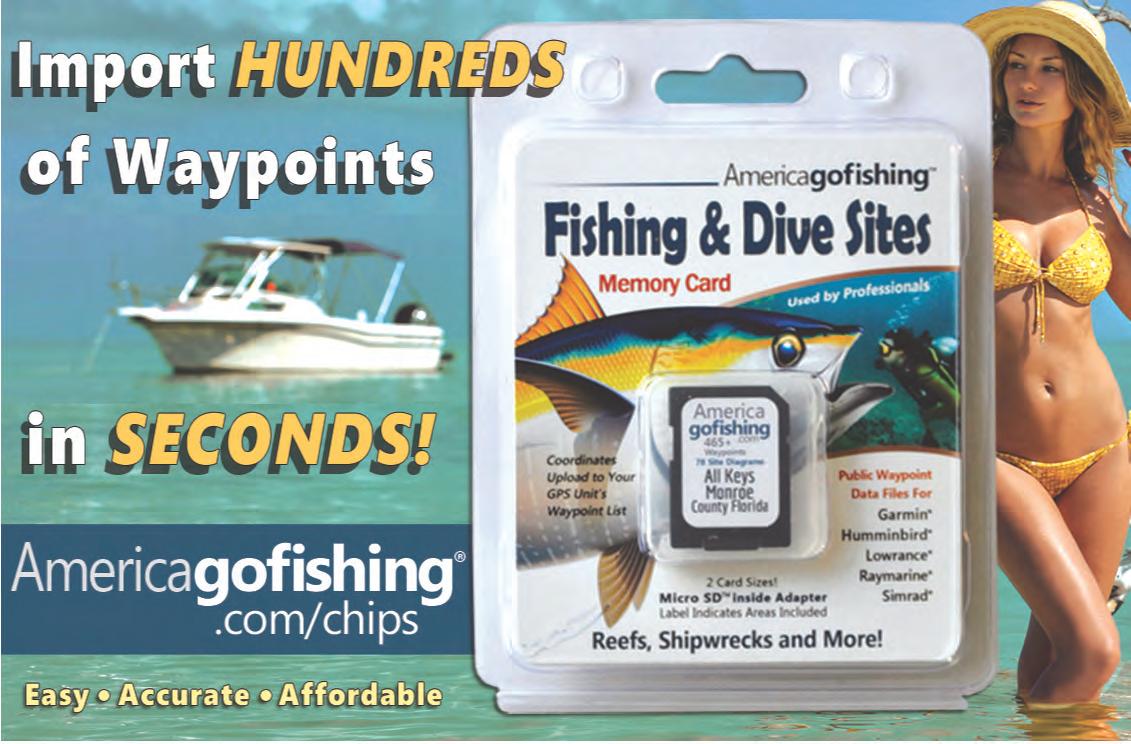

Even if you take precautionary steps to avoid it, sometimes you might hook a bird by accident. That’s when it’s important to remember—don’t cut the line and let the bird fly away with it attached. This will lead to entanglement, resulting in death of that bird and possibly others as well. Instead, follow these simple steps to unhook the bird: Reel. Remove. Release.
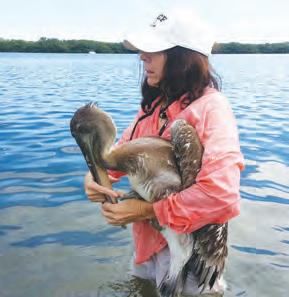
1. Wear safety glasses and enlist a partner for help.
2. Reel the bird in slowly and lift it from the water using a hoop net. Even a large pelican weighs only 4-8 pounds
3. Grasp the bird by the head just behind the eyes and fold the wings against the body. For pelicans, hold the beak, keeping the mouth slightly open so it can breathe. Cover the bird’s head with a cloth to keep it calm.
4. Never pull the hook out but carefully push the end through the skin, cut off the barb and back the hook out using pliers or clippers. If the bird is entangled, remove all line.
5. Release the bird (if healthy) by placing it on the ground near the water and allowing it to take off.
6. If the bird has swallowed the hook or is severely injured, contact a local wildlife rehabilitator from the list at MyFWC.com/unhook.
How else can you help a seabird or wading bird?
1. Don’t feed the birds, which teaches them to approach where they are more likely to be hooked.
2. Dispose of filleted bones where birds can’t get them—in a trash can with lid or at home. Bones of a filleted fish will become lodged in or tear throats, stomachs and intestines leading to the death of that bird .
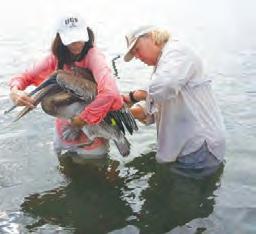
3. Cover bait buckets and take unused bait home.
4. Dispose of fishing line in a monofilament recycling bin or cut into small pieces and place in the trash.
5. Don’t leave your line unattended.
6. Cast carefully to avoid hooking a bird in flight or being snared on trees, bridge pilings etc.
7. Help others learn what to do when they accidentally hook a bird. It’s pretty easy, once you know how.
8. Sponsored by Friends of the Pelicans, Inc. More detailed information can be found at facebook.com/ friendsofthepelicans.
— Photos by Carol Cassels


The Keys are famous for several species of fish in both shallow and deeper water. One of the most sought-after targets for sport fishermen in the shallows is Albula vulpes, aka bonefish.
I recently had a day to myself and decided to head out in my kayak with fly rods to see if I could catch bonefish. The weather had scattered showers and moderately breezy; not perfect bonefishing weather, but good enough if the sun would stay out. Seeing them is half the battle, and without the sun it gets ex-

tremely difficult.

I started the morning looking for tarpon, but there were 2 guides already in the general area, and I didn’t see any tarpon activity, so I moved on to my bonefish plan. The tide was moving nicely, but before long, a consistent cloud line formed and would block out the sun for extended periods. I don’t like poling the kayak around when I can’t see the bottom, because I’ll likely spook any fish that are there without getting a shot at them. So, when the sun disappeared, I would gently drop anchor and play around on my phone until the sun came back out and I’d resume fishing. It finally got to the point where there were long periods of clouds with just a short bit of sun - quite frustrating! I noticed that about a 3/4 of a mile away, the next set of Keys were consistently sunny, being out of the line of clouds. I hadn’t planned to go there, but sitting on a dark flat was not working out and before long I would lose the good tide. So, I moved over to the “sunny” islands and resumed the search.
Bingo! Bonefish were consistently moving through the new area, and I was getting good shots at happy fish for the next 90 minutes! The wind was causing difficulties in making long casts, so I started moving a little closer to the fish than usual before casting so as to improve accuracy. A very basic, medium-weight shrimp fly was getting good results and in short order I landed 4 bones and had several more follows that didn’t quite work out. The schools of fish were generally about 5 to 7 fish per school and moving slowly with their faces on the bottom looking for food. Some of the fish were singles or pairs, and one school of 20+ came sprinting at the kayak as well. Then, as the tide died, the fishing did too.
It was long run back to the launch spot, and as I was moving, I spooked a couple more bones in an unusual area not far from the launch. I slowly circled back around and looked to see if I might get lucky. I did find one more pair of bonefish and hooked one of them but lost him when my fly line tangled in the guides and the leader popped. Dang!
Oh well, still an outstanding day on the flats in my little plastic boat! If you’ve always wanted to catch a Florida Keys bone, get in touch with me and we will make it happen!

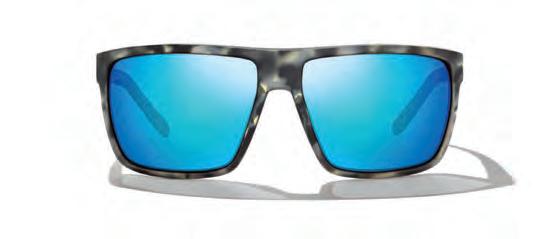

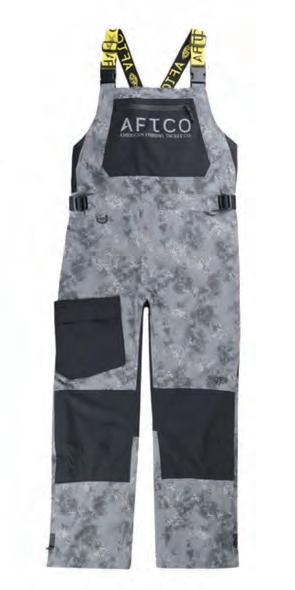
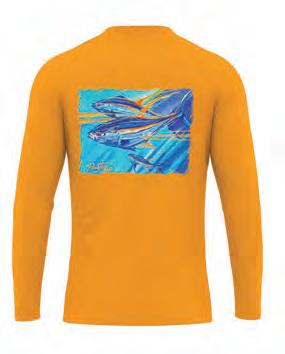
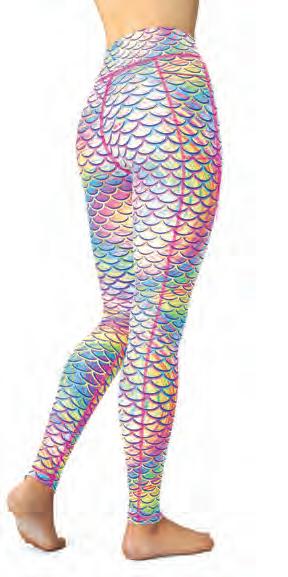

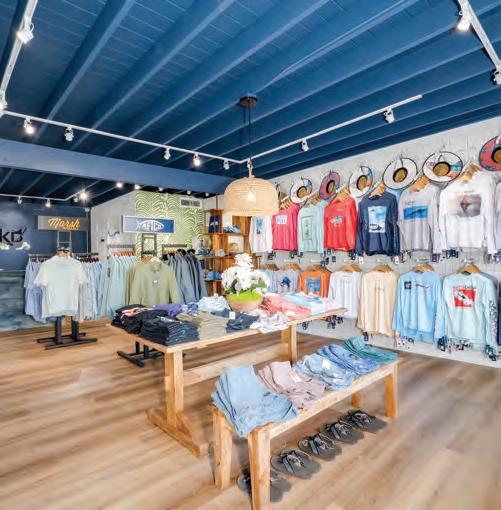






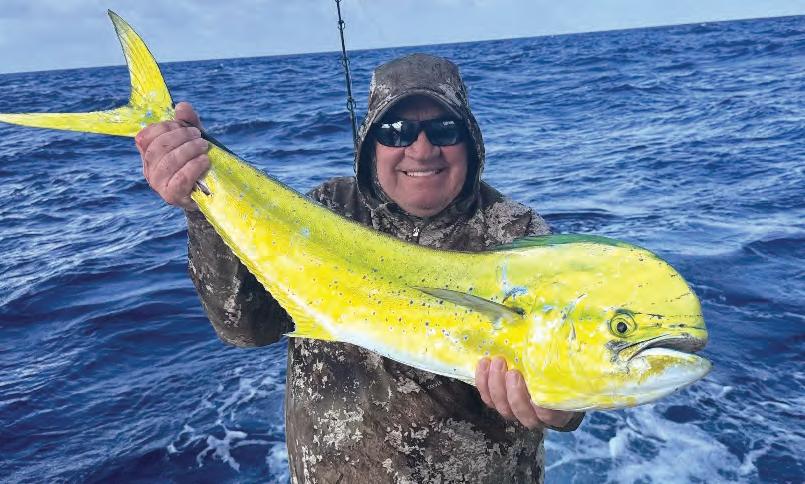
Mastering mahi can take a lifetime of successes and failures with a lot or research and development. This is the time of year that many consider the peak of mahi season. I’ve written several stories over the years about mahi fishing but in this addition, I will give you some tips I’ve learned that may help you during your next mahi trip. One time I was in a mahi tournament, and I had my team on the boat at 5am as we ran out past the humps all the way to the Bahamian Border. We caught a few, but no tournament contenders. I came back to the dock and was complaining to a buddy of mine, Captain Jamie Platt, about how bad the mahi bite was. He said “a lot of good mahi were caught today. Did you leave before sun came up and you went out as far as you could go didn’t you?” He said the quality and quantity mahi have been hitting between 9am and 12noon in 350ft to 550ft deep. You left to early and went too far and you ran right past the mahi in the dark. That day taught me a couple valuable lessons:
Lesson #1- Do your research prior to going out mahi fishing, especially if you haven’t gone in the past few days. Look at online reports and call avid mahi anglers and ask them to give you a report. If I would have asked around and done my research my tournament team could have slept in for a few extra hours and we would have traveled half or a quarter as far to get to a contending mahi. We would have saved precious fishing time, had a much better chance at a slammer and not to mention saved a bunch of money.
Lesson #2- Understand how’s and why’s. Back in my corporate executive days we had a saying that “those who know how will always have a job and those who know why will always be the boss.” Why were those mahi in so close and hitting so late in the morning. The moon had 98.3% illumination, The wind was blowing 15 kts into the west, the waves were 4ft to 5ft, the sky was overcast, and the water was not clear and almost considered murky and the Gulf Stream was only 15 miles offshore. Mahi feed in the middle of the day on a full moon just like deer and other animals in the wild. When it’s windy and wavy, bait fish and flying fish get pushed in shallower and gamefish follow them in. Because the skies were overcast, and the frigates and sea birds couldn’t feed on the flying fish because of the cloud shade on the murkish water. The Gulf Stream with the direction of the wind/current pushed the weed lines in closer. This is an example of understanding Mother Nature’s how’s and why’s. Another time I was out mahi fishing with an Sr Captain Kavon Mehrani who taught me how to look at birds. Big difference between a sea bird and a sea gull. He taught me how to read whether the birds hunting like we are or swooping on bait while staying almost in the same spot pecking at the same area, if he doing this he’s over mahi if he’s swooping but covering a lot of water quickly it’s most likely over tuna which we call “ tuna birds”, or frigate what does it mean when he’s traveling slow down low? It means he’s most likely over a 30 plus inch bull and cow (once the bull and cow reach 30 inches they’re mates for life) and if the frigates moving fast and flying high, he’s either on the hunt or over tuna.

He taught me to look for “birdnatos”, when the birds get into a feeding frenzy and looks like they’re flying in tornado formation. Best on the edge of storm line. Capt. Kavon also taught me that when it comes to trolling, less is more. Some boats troll five lines, seven lines and more. Kavon taught me to troll one real long and one pretty short. You might ask how two lines can be better than seven lines. When you consider how often you have to clean the weeds off of your trolling bait be it pre-rigged ballyhoo or artificial, you get worn out trying to tend to two lines much less seven lines. By the way, in case you didn’t know, mahi won’t hit a trolling bait with even a little piece of seaweed stuck to it. “Also, with one long and one short you can dive in tight circles and not get your lines jacked up by turning sharply. Plus, if and when you get a slammer bull to hit, he’s less likely to tangled on a bunch of other trolling lines. Kavon taught me that there’s a big difference between seaweed and sargassum weed. Mahi don’t really follow seaweed lines they mostly follow sargassum weed because sargassum weeds have little berries on them that baitfish love to pick at and eat and of course the gamefish eat the baitfish. This is an example of understanding the food chain. Another lesson was in a mahi tournament a few years ago that we achieved largest bull and cow calcutta. We were in heavy waves in our 53ft Hatteras Sport Fisher with a four-person team and decided to bring my 3-year-old grandson Atlas along. My grandson started getting seasick at the same time we were trolling under three frigate birds. We hadn’t seen a weed line or any floaters all morning and I knew these three frigates were our best shot at finding a tournament winning bull and cow. I took my grandson into the cabin and put him to sleep and instructed my first mate, named Chicken Wing, to follow those frigates until I come back up or until he finds a floater bigger than a bucket. It took me an hour get my Grandson to sleep. I went back up and Chicken Wing was still traveling with the three frigate birds and informed me he had spotted a big bull and cow a few times in the past hour under the frigates. We eventually trolled past them and hooked a giant bull and cow simultaneously. The lesson I learned was “love the one you’re with.” If I hadn’t gone down to put my little guy asleep for an hour, we probably wouldn’t have stuck with those frigates that long. I probably would have gotten impatient in a half hour or less and called the frigates “fake news birds” and traveled on for greener pastures. It’s hard to leave frigates, but always remember a frigate is a 100 times better fisherman than any human. As my late mother in law used to tell me, be patient! See you next month and thanks for reading.

— For a charter with Captain Joel or Jojo Brandenburg of Ana Banana Fishing Company in Marathon Florida Keys call cell 813-267-4401 or office 305-395-4212 or visit www.marathonkeyfishingcharters.com or visit us in person at Ana Banana Marina located at 11699 Overseas Hwy Marathon Florida Keys. Look for the big yellow Ana Banana sign with antlers around it.


MONROE COUNTY SHERIFF’S OFFICE

• Install motion sensor lights. Make sure areas around the boat are well lighted.
• Install surveillance cameras and make sure they will capture the face of an intruder. Cameras are often installed too high and only capture the top of a suspects head or the brim of the hat he is wearing.
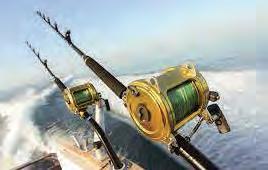
• Install a GPS tracking device on your boat and/or engines.
• Install a boat alarm. Alarms are very effective at preventing equipment and boat thefts.
• Disconnect the batteries to disable the trim / tilt function. Keep the engine down, touching the ground so the lower unit can’t be removed.
• If the boat is on a trailer, chain the rims together or boot one of the wheels to prevent the boat and trailer from being stolen.
• Keep a trailer hitch lock on at all times.
• Install bolt locks on the engine or put extra-long engine bolts on and bend the ends.
• Destroy the threads on one bolt so the nut can’t be removed.
• Keep valuable electronics in a secure location. It might be a hassle, but it will same you thousands of dollars in the long run.
• Take pictures and record serial numbers if available.
• Don’t leave fishing and diving equipment unattended outside. It only takes a thief a minute - literally - to take it.
• If you are gone for an extended period, call your local Sheriff’s Office substation. Our deputies will keep an eye on your property while you are away.

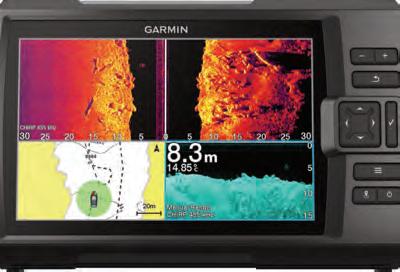
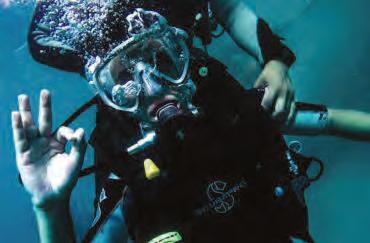
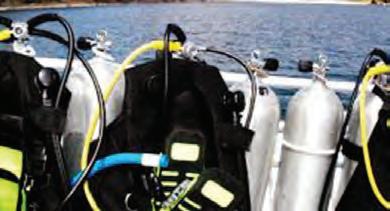

Crime Stoppers offers a reward for the arrest of anyone in a felony criminal case. If you see anything suspicious, call the Sheriff’s Office immediately! It is our job to check out suspicious activity. Your call may be the one that helps us catch the bad guys!

If you see something you think may be suspicious. Call CrimeStoppers with any crime tips: 1-866-471-8477

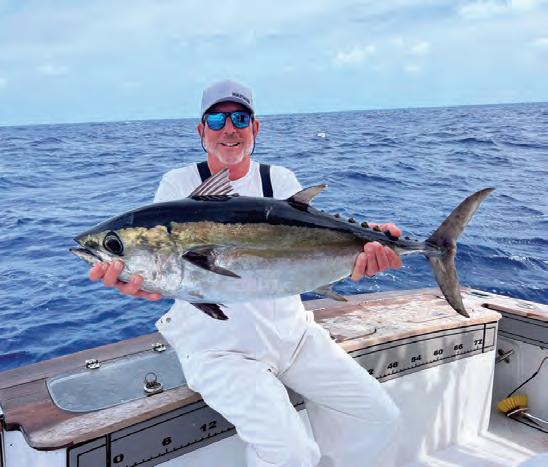
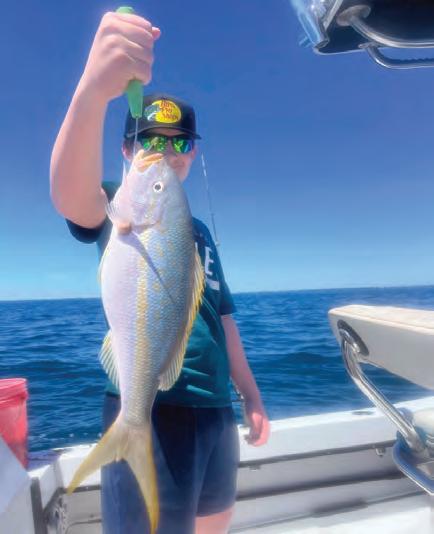
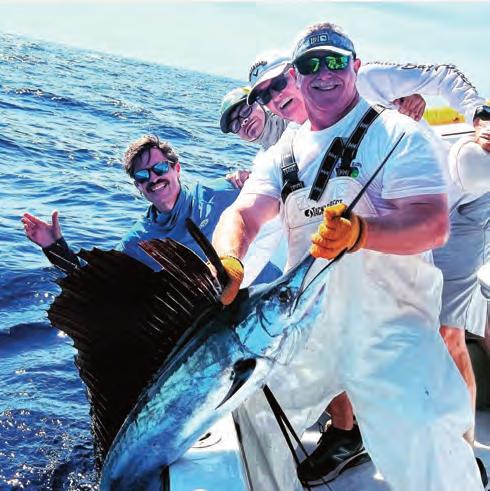
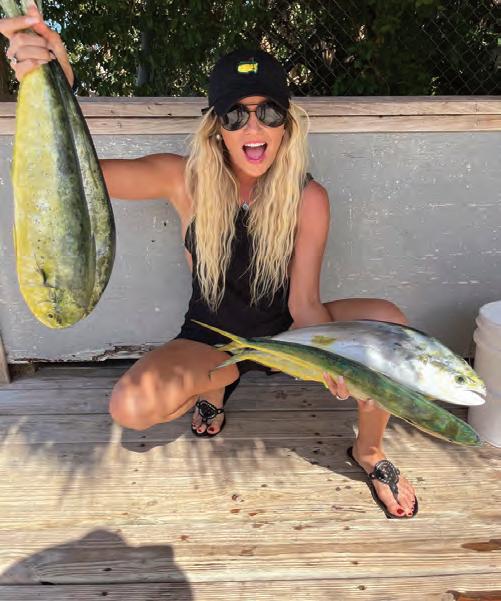
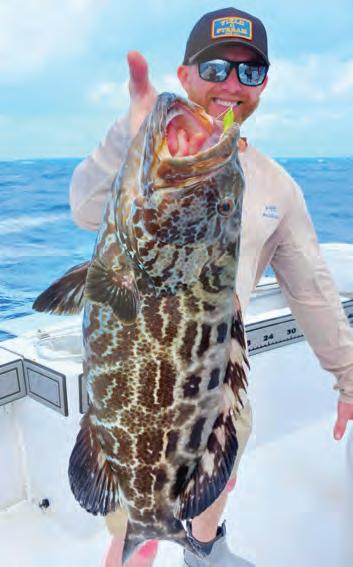
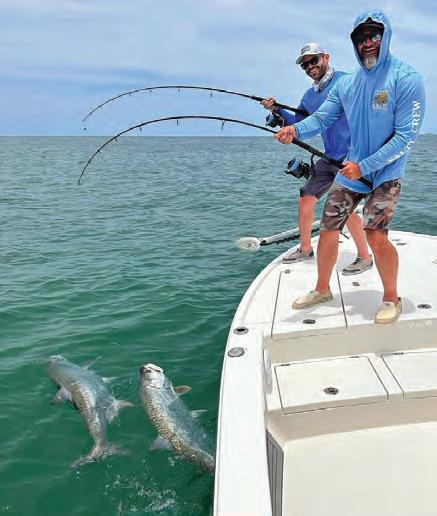

If you have a catch to brag about send your picture and caption to: flkeys@coastalanglermagazine.com
 Capt. Bruce Andersen landed this sailfish aboard the Capt. Easy Charters off Marathon.
Capt. Bryson finding Double Headers for clients aboard Silver Tide Charters in Key West
Nice Yellowtail caught aboard the Capt. Easy Charters off Islamorada
Cecily Gathings had a great day on the water off the coast of Key Largo.
Game on! Its grouper season! Main Attraction is staying tight with the black groupers.
Big blackfin tuna caught while kite fishing on the Main One, of Main Attraction Sportfishing. Way to go Mark!
Capt. Bruce Andersen landed this sailfish aboard the Capt. Easy Charters off Marathon.
Capt. Bryson finding Double Headers for clients aboard Silver Tide Charters in Key West
Nice Yellowtail caught aboard the Capt. Easy Charters off Islamorada
Cecily Gathings had a great day on the water off the coast of Key Largo.
Game on! Its grouper season! Main Attraction is staying tight with the black groupers.
Big blackfin tuna caught while kite fishing on the Main One, of Main Attraction Sportfishing. Way to go Mark!

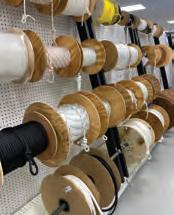

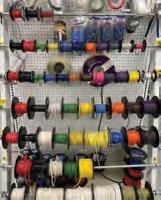


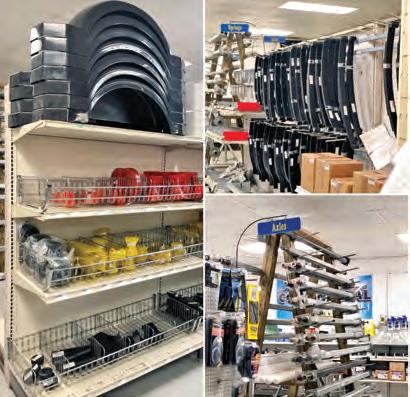




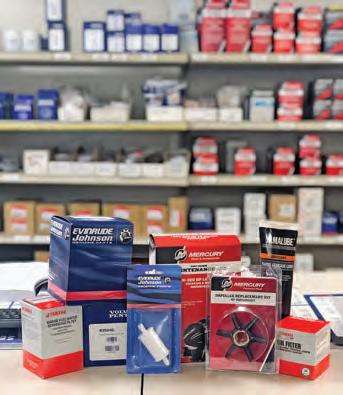
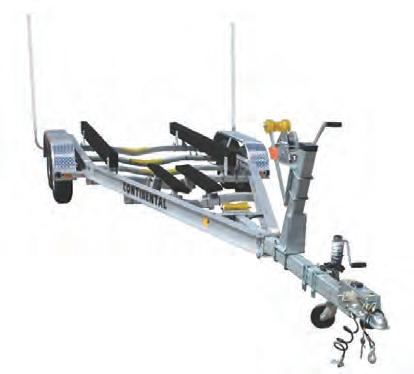







CCA Florida STAR presented by Yamaha launched into year-10 on Memorial Day weekend! For 100 days, this unique fshing competition will award more than $500,000 in prizes and scholarships.
CCA Florida, the state’s leading marine fsheries conservation, habitat restoration, education and advocacy organization, holds the annual event to create awareness for conservation and support the protection and enhancement of Florida’s marine habitat.
Tis year, participating in STAR is easier than ever. Te competition has eight divisions including Tagged Redfsh Division, Tagged Dolphin Division, an Inshore and Ofshore Division, Native Watercraf Kayak Division, Realtree Youth Scholarship Division, Power Pole Conservation Division and Costa Kick Plastic Trash Division, and there are more than $500,000 in prizes and scholarships available!
“We are excited to kick of Florida’s largest family friendly saltwater
fshing competition for the tenth year,” STAR Director Leiza Fitzgerald said. “Tis year, it is easier than ever to participate in STAR because we have simplifed the competition to give anglers and non-anglers the chance to win big. Since 2015, we have given away more than $4 million in prizes, including $900,000 in college scholarships, and we can’t wait to do it again!”
STAR’s signature Tagged Redfsh Division presented by TH Marine ofers fve adult winners the choice of a Contender Boats 22 Sport, Dek Kat Boats 27 Flatz Kat, Spyder Boats FX19, Micro Draf Ski package that includes a Sea-Doo Fish Pro Trophy and a CanAm Defender. Each boat is powered by Yamaha and equipped with an Infnity trailer. For the frst two youth anglers, prizes include a tiller boat powered by Yamaha, a trailer, a Minn Kota trolling motor and Humminbird electronics.
In total, there are more than 160 prize-winning tagged red of Florida’s coastal counties. Citrus and Charlotte counties, STAR’s 2024 Destination Counties, ofer the best shot at a prize-winning received twice as many tagged reds as the other counties.
Te STAR competition also focuses on conservation with its CatchPhoto-Release format and smartphone app. STAR’s Trash Division has set the bar for other fshing tournaments to implement conservation-friendly alternatives.
All STAR entries must be photographed with the o Florida Measuring Device, which is available free of charge at locations throughout the state, including all Florida West Marine stores.
Te CCA Florida STAR competition presented by Yamaha has a division for everyone. Now with only eight divisions, plus ALL saltwater species included in the event and most winners determined by random drawing, anglers of all ages and skill levels can fsh from anywhere in Florida’s saltwater and have greater opportunities to win.
Registration is $40 for current CCA Florida members or $80 for nonmembers, which includes CCA Florida membership. Kids ages 6-17 can register for free with their current ($10) CCA Florida youth membership.
To register, visit ccafstar.com today!




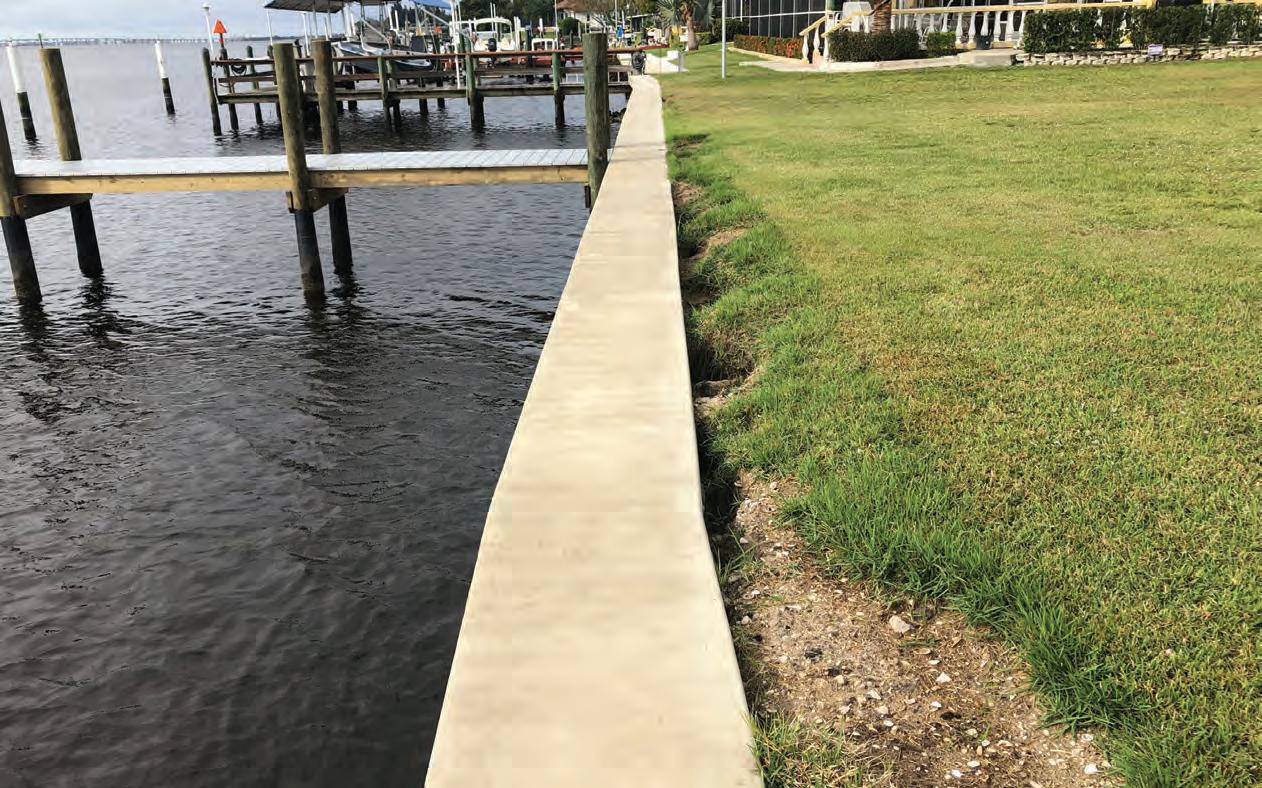


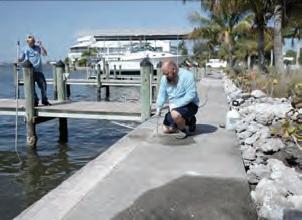
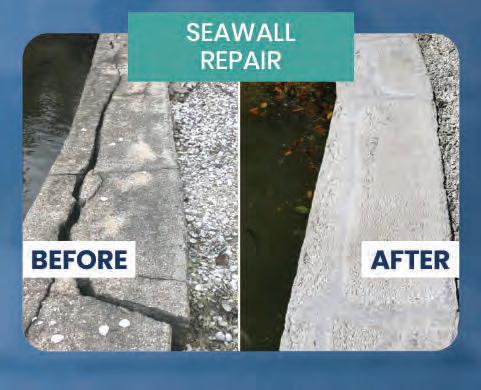

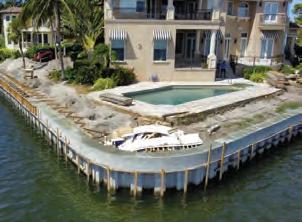


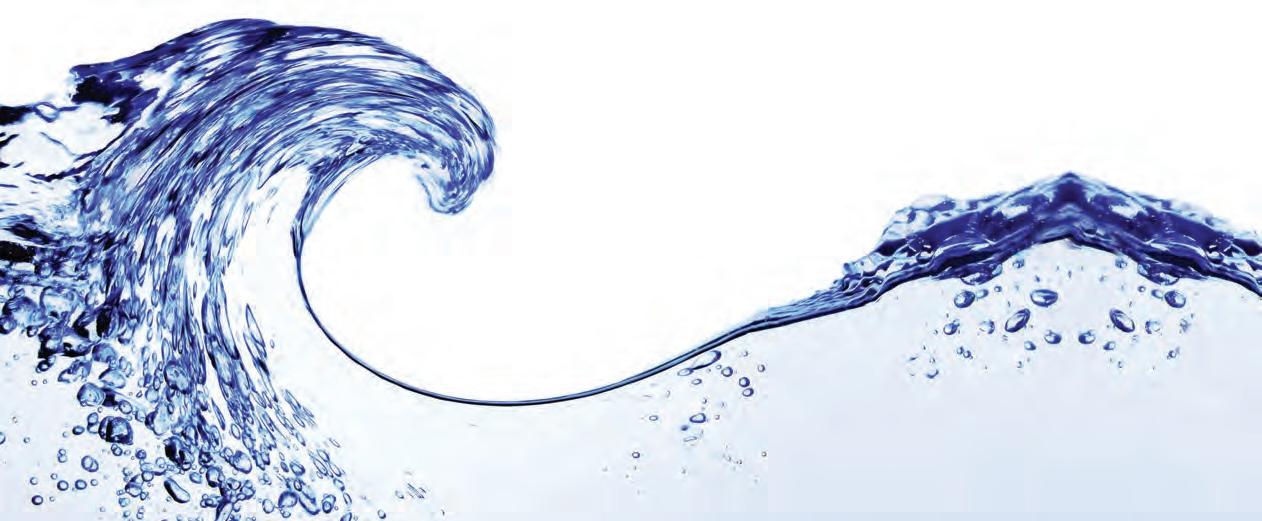

In case you haven’t seen it yet, this enormous 888-pound bluefn tuna caught in late April out of Destin just might be the largest bluefn ever caught of Florida. It was brought to the docks at Boshamps Seafood and Oyster House on Destin Harbor, and although the fsh won’t qualify as a state record because landing it was a team efort, no one in Destin really seems to care. It’s a catch worth celebrating.
According to Te Destin Log, Capt. George Gill was piloting the Flat Dangerous on its frst Gulf of Mexico trip on Wednesday, April 24. About 68 miles out of Destin, the new 80-foot Viking encountered a massive school of surfacefeeding bluefns while the crew was fshing for bait.


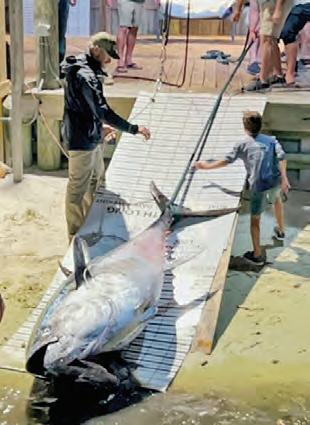
With just four baits onboard, some small yellowfn, skipjack and blackfn, the captain gave chase, and the crew tossed baits into the school of bluefns. Tey lost three big fsh in short order, but the fsh of a lifetime for boatowner Warren Williamson, of Alabama, came tight on the fourth and fnal bait.
Te fsh died about an hour into the fght, and it was a team efort to haul it to the surface over the next four hours with 100-pound main line, 150-pound braid and 400-pound leader.
Te fsh measured 110 inches in length and weighed 888 pounds. Tat’s a heck of a fsh to break in a new boat!
Te existing state record, caught by Rick Whitley out of Destin in 2017, weighed 826.5 pounds. Another would-be new record was caught in 2022, also out of Destin by a team of anglers sharing time on the rod. Tat fsh weighed 832 pounds. Te Gulf of Mexico bluefn tuna record stands at 1,152 pounds. Tat fsh, caught of Louisiana in 2003, is the largest fsh caught by rod and reel in state history.


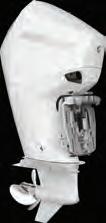


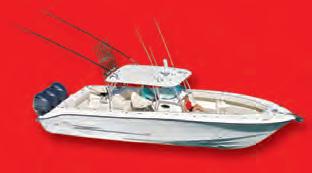






Captains For Clean Water (CCW), a non-proft organized by fshing guides, is petitioning Big Sugar to drop its lawsuit seeking access to irrigation water from the Everglades Agricultural Area (EAA) Reservoir.
Te EEA reservoir, which is currently under construction, is the centerpiece of Everglades restoration projects designed to provide relief from devastating Lake Okeechobee discharges and restore the fow of freshwater south, as nature intended, through the Everglades to Florida Bay.
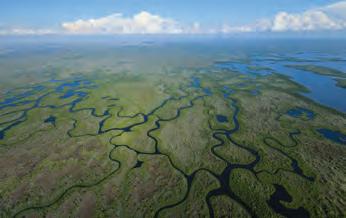
Big Sugar, made up of sugar producers United States Sugar Corporation, Okeelanta Corporation (Florida Crystals) and Te Sugar Cane Growers Cooperative of Florida, claims farming interests in South Florida were promised water access by the federal government. Last year a federal judge threw out the case brought by Big Sugar, and this recent lawsuit is in the appeals process, with no projected timeline.
Explanation of the CCW petition reads: “If Big Sugar wins, they could push to use the EAA Reservoir as their personal taxpayer-funded water supply, upending years of restoration progress and sealing the fate of Florida’s future to include more damaging discharges, more toxic algae blooms, and more economic and environmental peril. It could also set a dangerous precedent, forcing Everglades Restoration projects to prioritize Big Sugar’s interests and replace their historical water supply over benefts to South Florida’s waters— regardless of how and when Sugar lost water supply since December 2000.”
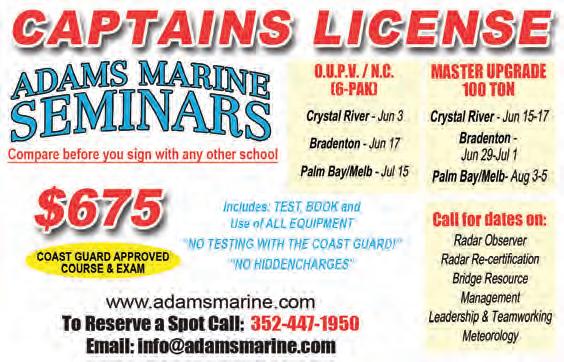


To see more or to sign the petition, go to captainsforcleanwater.org. YOU THINK IT, WE INK IT! SCREEN PRINTING | EMBROIDERY STICKERS | BANNERS | SIGNS DECALS | WRAPS | LASER ENGRAVING DIRECT-TO-GARMENT PRINTING
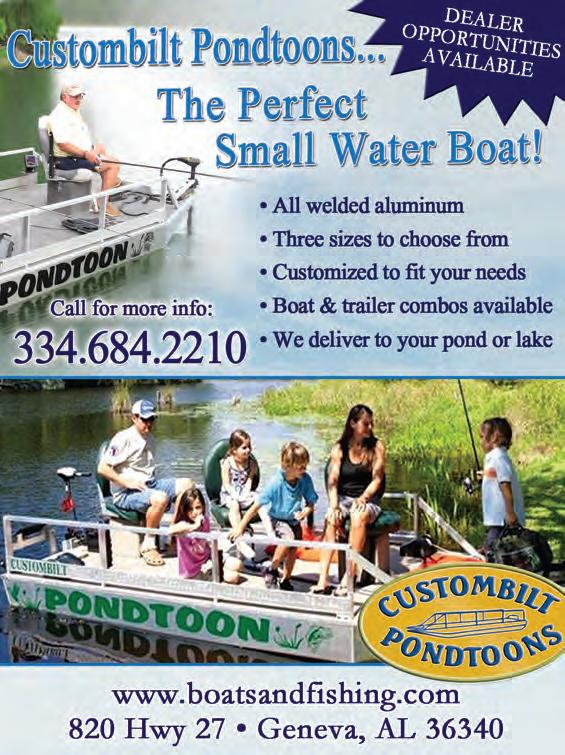


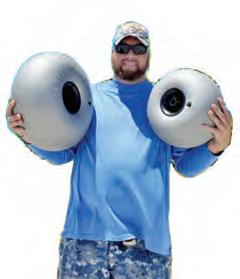


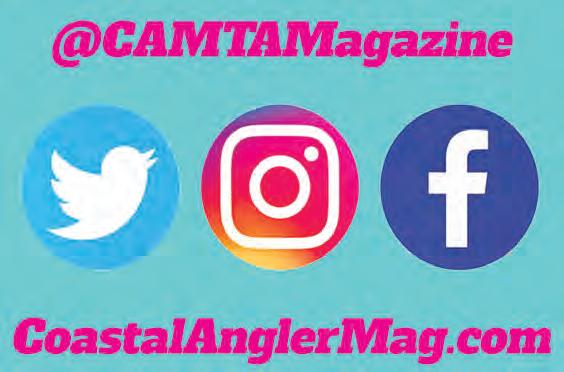








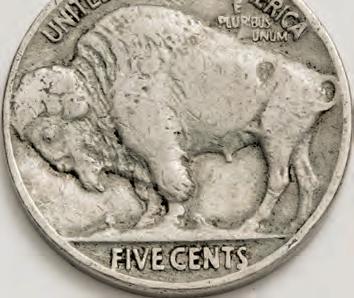




One of the most beloved coins in history is a true American Classic:

The Buffalo Nickel. Although they have not been issued for over 75 years, GovMint.com is releasing to the public bags of original U.S. government Buffalo Nickels. Now they can be acquired for a limited time only—not as individual collector coins, but by weight—just $49 for a full QuarterPound Bag.
100% Valuable Collector Coins—GUARANTEED!
Every bag will be filled with collectible vintage Buffalos from over 75 years ago, GUARANTEED ONE COIN FROM EACH OF THE FOLLOWING SERIES (dates our choice):
• 1920-1929—“Roaring ’20s” Buffalo
• 1930-1938—The Buffalo’s Last Decade
• Mint Marks (P,D, and S)
• ALL Collector Grade Very Good Condition
• FREE Stone Arrowhead with each bag
Every vintage Buffalo Nickel you receive will be a coveted collector coin—GUARANTEED!
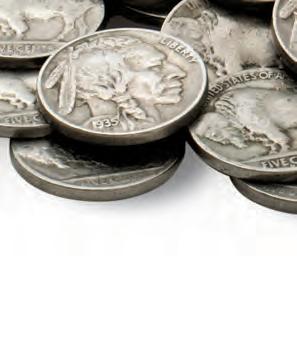


Plus, order a gigantic full Pound bag and you’ll also receive a vintage Liberty Head Nickel (1883-1912), a valuable collector classic!
Long-Vanished Buffalos Highly Coveted by Collectors
Millions of these vintage Buffalo Nickels have worn out in circulation or been recalled and destroyed by the government. Today, significant quantities can often only be found in private hoards and estate collections. As a result, these coins are becoming more soughtafter each day.
Supplies of vintage Buffalo Nickels are limited as the availability of these classic American coins continues to shrink each and every year. They make a precious gift for your children, family and friends—a gift that will be appreciated for a lifetime.
NOTICE: Due to recent changes in the demand for vintage U.S. coins, this advertised price may change without notice. Call today to avoid disappointment.
GovMint.com • 1300 Corporate Center Curve, Dept. VBB653-08, Eagan, MN 55121




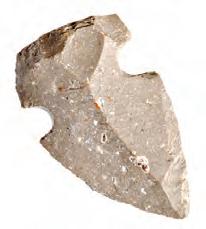



30-Day Money-Back Guarantee
You must be 100% satisfied with your bag of Buffalo Nickels or return it within 30 days of receipt for a prompt refund (less s/h).
Order More and SAVE
QUARTER POUND Buffalo Nickels (23 coins) Plus FREE Stone Arrowhead
$49 + s/h
HALF POUND Bag (46 coins) Plus FREE Stone Arrowhead
$79 + s/h SAVE $19
ONE FULL POUND Bag (91 coins) Plus FREE Stone Arrowhead and Liberty Head Nickel
$149 + FREE SHIPPING SAVE $47

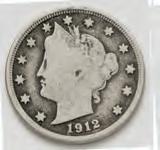
FREE SHIPPING over $149!
Limited time only. Product total over $149 before taxes (if any). Standard domestic shipping only. Not valid on previous purchases.


I’ve long been a proponent of chumming up a place on the bottom with squid and then feeding grouper a big live bait.
However, afer the last few trips, I’m starting to rethink this tactic because of the number of sharks we’ve been catching.
I’ve never seen as many sharks as we are seeing right now. Te bottom is covered with them, and the top layer of the water column is full of them. Tis past trip, we put out fve Spanish mackerel on light lines hoping for a wahoo bite. We caught fve sharks almost instantly. One of these bites was the biggest tiger shark I’ve ever seen. It was at least 12 feet long and 2 feet wide across the head. Te rest of them were standard 6- to 9-footers; it takes a toll on you to get them to the boat for dehooking.
apart to create a lot of smell down on the bottom. Ten I drop live pinfsh or small snappers to the grouper drawn in by the “chum.”
Lately, I’ve resorted to dropping big, pretty live baits frst to see if we can get a few grouper bites before the taxman arrives, and it’s become a matter of WHEN rather than IF he shows up. It’s “hit-and-run” fshing. We pull up on a nice mark with pinfsh and grunts already rigged on the jig. I hit the spot lock on the Rhodan and drop in for a few good bites. When the sharks show up, we just move up or down the ledge. Lather, rinse and repeat as ofen as needed. Granted, we haven’t boated as many of the smaller snappers or seabass for the cooler, but we’ve caught some beautiful grouper with this “hitand-run” style of bottom banging. Te wahoo are diferent story. We quit putting the light line out due to the instant shark bite. I’ve got to fgure something out for that. From now until the end of October or the frst of November, wahoo will be everywhere and nowhere at the same time. Tey will come inside the edge of the Gulf Stream following big stacks of bait. As usual, some king mackerel fsherman will catch a 100-pounder on a live menhaden in less than 100 feet of water while chasing a tournamentgrade kingfsh.
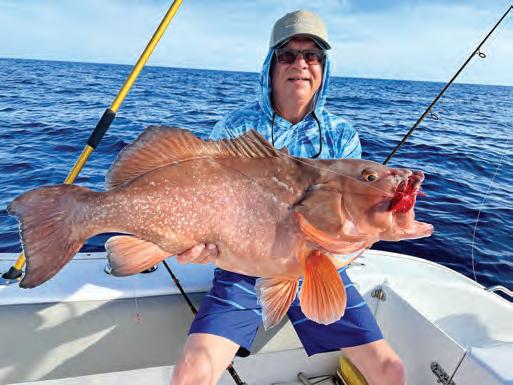
Between all the American red snappers—which we aren’t allowed to keep—and all the sharks, we’ve been run of of several square miles of bottom lately. Tankfully, we’ve found some of the grouper we’re looking for, but I’m seriously rethinking the “chumming” part of the tactics I usually employ. Normally, I begin on a spot by dropping whole squid on jigs, which the smaller fsh pick

I said all that to say this: We’re going to take more pinfsh and less squid to catch “hit-and-run” grouper. Someone please educate me on a bait that will not catch a red snapper!
For more info on the jigs and bait, check out Tim Barefoot’s YouTube channel and website, barefootcatsandtackle.com.
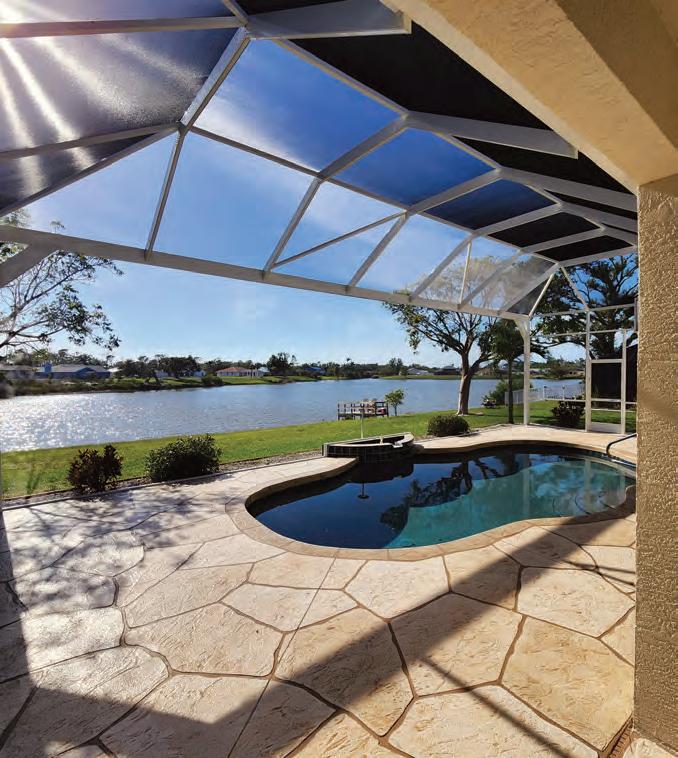
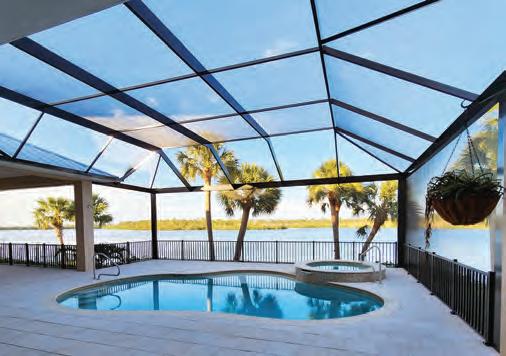
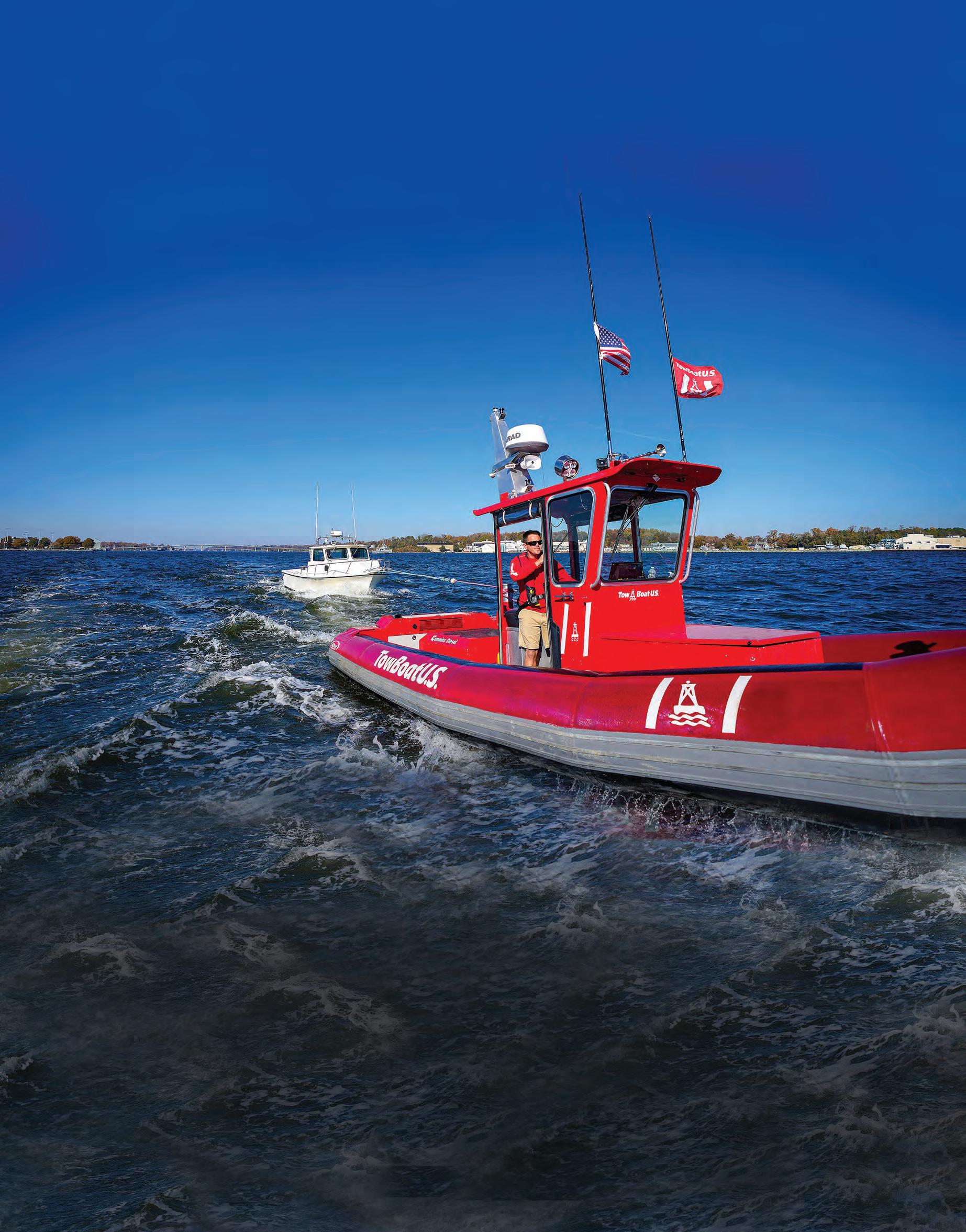



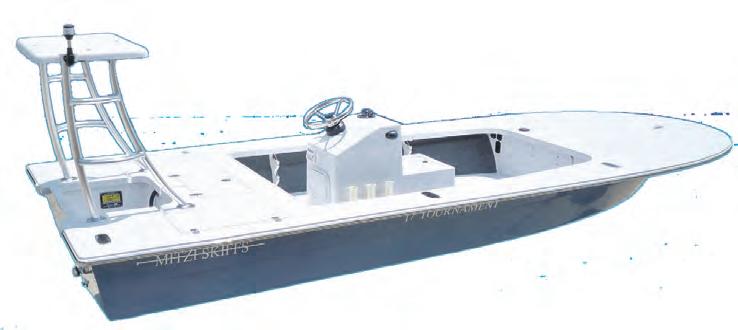
In the boating world, brand loyalty is earned. Over years, boater experiences with vessels— good and bad, on and of the water—are what build the reputations of boats. It might, or might not, come as a surprise that two brands that have garnered sterling reputations in the industry for functionality and dependability are manufactured by the same builder.
C-Hawk and Mitzi Skif are both built in the U.S.A. with the same philosophy that simplicity leads to vessels that are easier and more afordable to operate and maintain. A simple, well-designed and well-built boat, comes with less hassle, leaving more time to spend on the water. Especially among anglers, this philosophy has built large followings for both brands among people who are more interested in fshing and boating than they are in pampering their pretty boats.
“We build a keep-it-simple-stupid boat. If you want something you can sof scrub at the end of the day and put it away, you’re my guy,” said Brad Grubbs, the owner and manufacturer of C-Hawk and Mitzi Skif. “We set out to make boats that are afordable to operate and afordable to own, and the philosophy has worked.”
Although Mitzi Skif originated in the 1990s for a singular purpose, the same philosophy for simplicity applies. Fly fshing the fats drove Tom Mitzlaf to design a skif with quiet maneuverability, extremely shallow draf and a clean deck layout to make him a better fsherman. It was simple by necessity, and it revolutionized the industry.
Tree decades later, Mitzi’s line of 15’, 16’and 17’ skifs achieves those purposes exceptionally well, and they have led the way with innovations that make them the fats boats other boat builders imitate. A Mitzi does everything the pricier skifs do, yet they are afordable enough for any angler to own and operate.
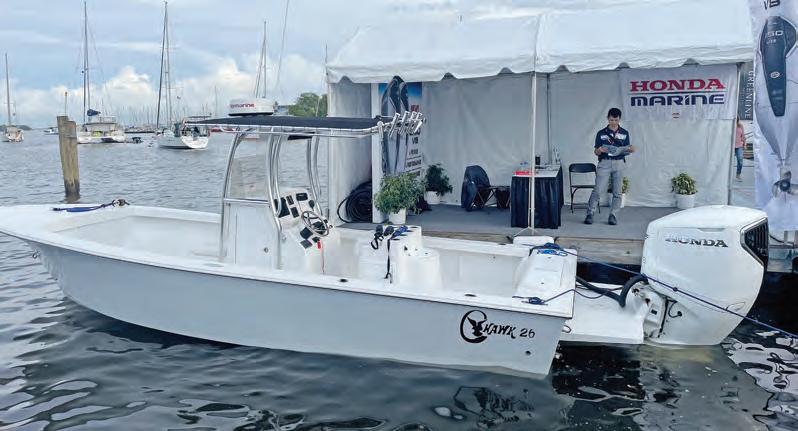
“If it ain’t broke, don’t fx it,” Grubbs quipped. Mitzi builds skifs for anglers more interested in fshing than in spending a lot of money.
Te 15’ remains a purpose-built fats boat for one or two anglers to sneak up on wary fsh in super-skinny water. Te 17’ models are more multi-purpose. Tey can fsh three anglers, and while they are primarily a fats boat, they perform admirably as bay boats with a modifed V-hull and an 11-degree deadrise at transom to reduce hull slap. Rolled gunnels knock down spray for an exceptionally dry ride.
Tey are solid and durable for long years of heavy use, and from hideaway pushpole holders to fush-mount hardware, Mitzi delivers clean and stable casting decks designed specifcally for hard-core anglers. www.mitziskifs.com
C-Hawk has been around since the mid1970s and ofers lines of bombproof 16’ to 29’ center consoles and 22’ to 29’ sport cabins that were originally developed for commercial applications. C-Hawks remain widely used commercially, and many recreational
boaters also see the value in a vessel that’s built to take a beating.
“Really, we just took a commercial-duty boat and put a little lipstick on it,” Grubbs said. “ Te boat is as tough as it ever was. It’s been the same boat for nearly 50 years.”
At their core, C-Hawks are hardcore workhorses, and the center console models have become popular with charter captains because they are built to withstand hard use for years of trouble-free boating. Grubbs pointed to C-Hawk’s 25 CC as a great example of what the brand has become. It’s an extremely stable fshing platform that drafs just 12 inches, and with a 300 horsepower max it’ll take you anywhere you need to go from skinny water to light ofshore duty. What’s more, it’s infnitely customizable from the factory.
“We can mix and match consoles, fsh boxes, full transoms, cut transoms, bare hulls… you name it,” Grubbs said. “ Tere are some recreational guys adding towers and sight fshing for cobia, and such. Everything we do is built around keep it simple, keep it efcient, keep it easy to maintain, keep it cost efective to own and operate. Tey are all unique… no cookie cutter trailer queens here. Te 25 is a great example of what C-Hawk is.” www.chawkboats.net

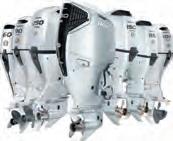
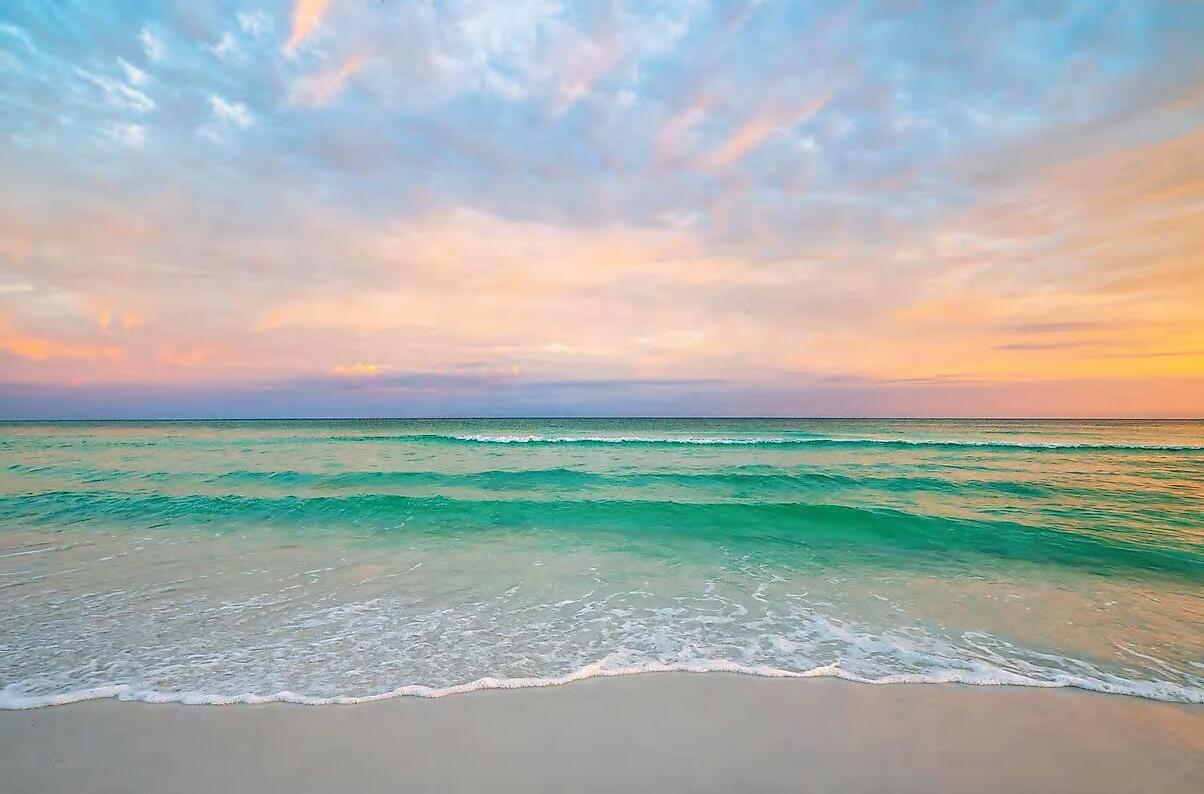




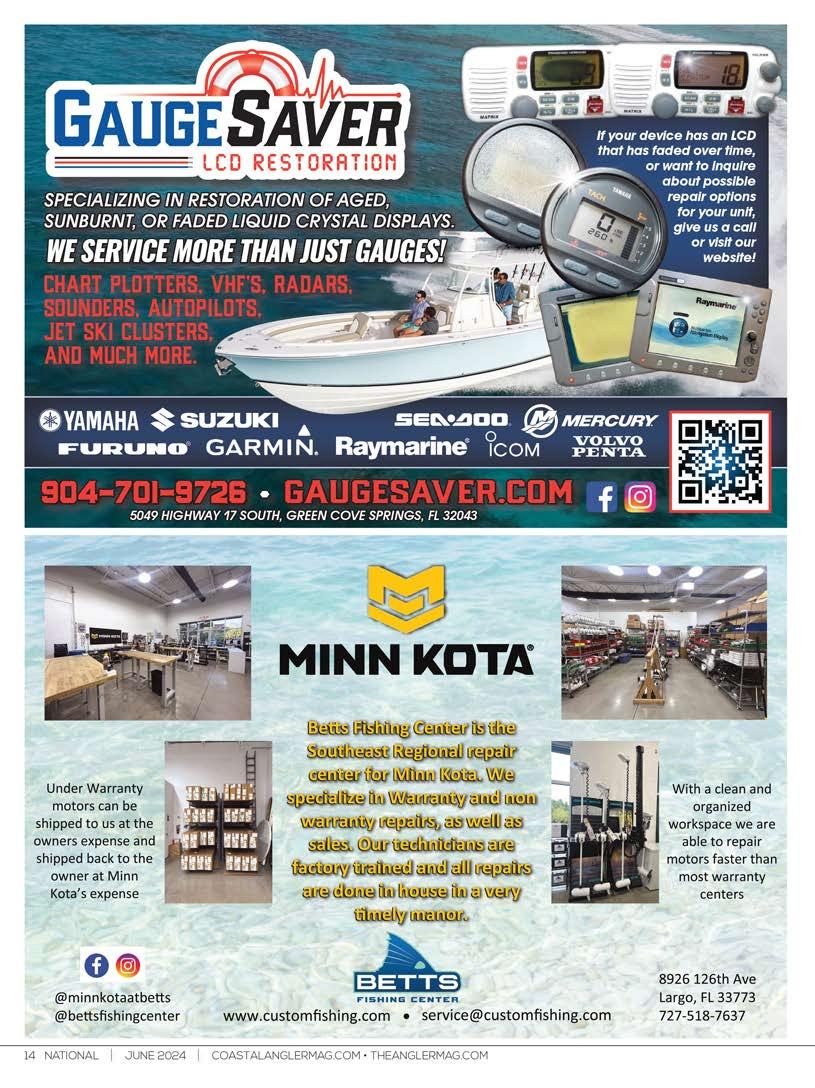

Every month, I provide tips to help make you a better angler. Tis month’s tip is one of the most important. With so many tackle and gear options on the market these days, staying organized on the water is difcult. Here are a few things I do that make me a more efcient angler because I know exactly where to go when looking for the right tool for the job.
Storage options vary depending on the type of fshing you do. I’m going to stick to bass fshing, but don’t be afraid to alter these tips to your style of fshing.
When storing baits, hooks, line and gear, your No. 1 enemy is moisture. Keeping your tools dry should be a priority because it keeps hooks sharp and everything else rust-free. I store almost everything in waterproof boxes or bags. Tese storage options might be a little more expensive up-front, but when compared to losing a whole box of lures or hooks to rust, your investment will pay for itself many times over.Another good trick I’ve learned is to use DampRid moisture absorbers. Here in Florida, where humidity is high and temperatures fuctuate, condensation builds up in boat compartments. Te best thing to do is to take your tackle out of the boat and move it inside, but this is not an option if you fsh a lot and have a lot of gear. DampRid containers help keep everything safe and dry by absorbing moisture from the air in your boat’s storage compartments.
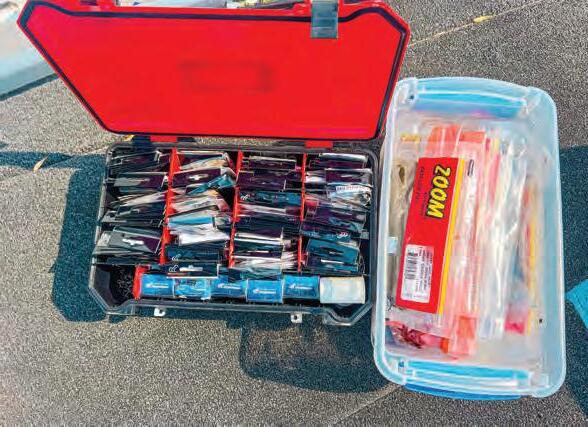
Now let’s talk about organization. If you’re a bass angler, you have a ton of sof plastics in diferent styles and colors as well as packs of hooks, jigs and weights to fsh them. I use plastic Sterlite containers with latches to store my bags of sof plastics. You can buy them at Walmart. I organize my baits by the type of sof plastic they are, and I label each container. On the water, this makes it easy grab the style of bait I’m looking for. Also, before I leave the house, labels make it easy to load what I think I’ll need for the day and remove what I don’t.
On the hook side of organization, one mistake people make when organizing hooks is to take them out of the original packaging to place them in compartment boxes. Tis is a huge mistake. Hook packs are clearly labeled by size and style, which allows you to quickly identify them on the water. Also, hook packs are designed to keep hooks sharp, untangled and dry. You can store your hooks in a box, but you should leave them in their original packaging.
Hopefully, these tips help you be more efcient on the water and save you some money by protecting your investments.
Tyler Woolcott is a professional tournament angler and guide. Check out his website at www.tylerwoolcottfshing.com.


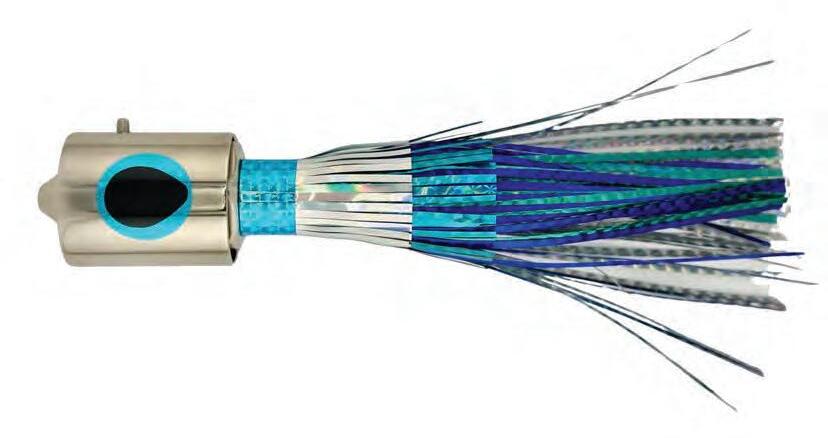







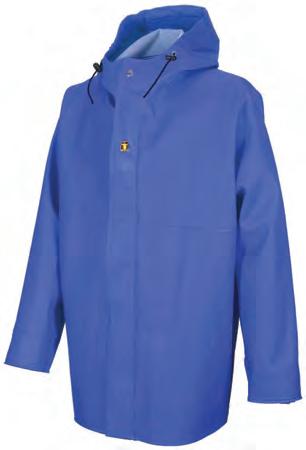
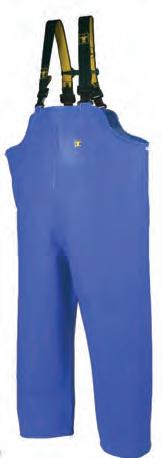




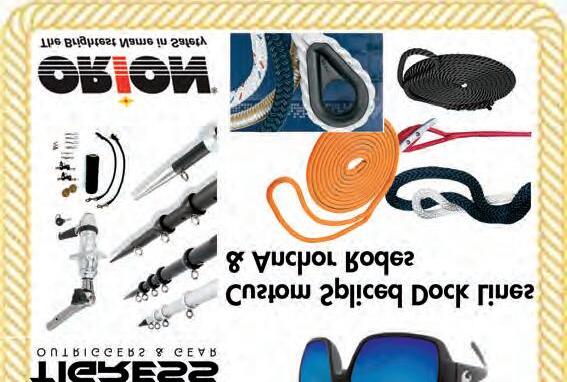
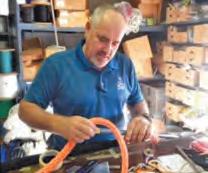



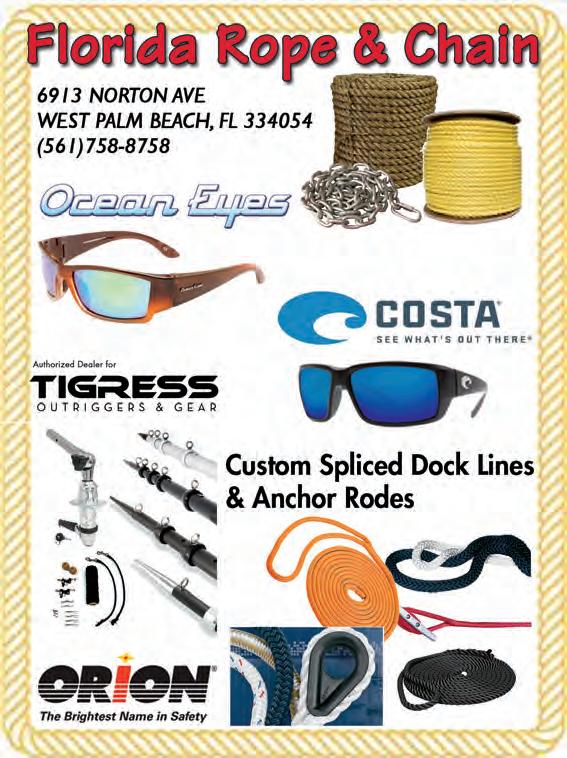
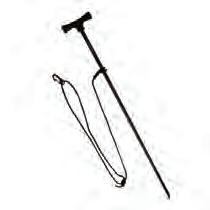




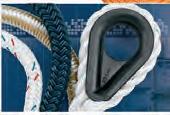
















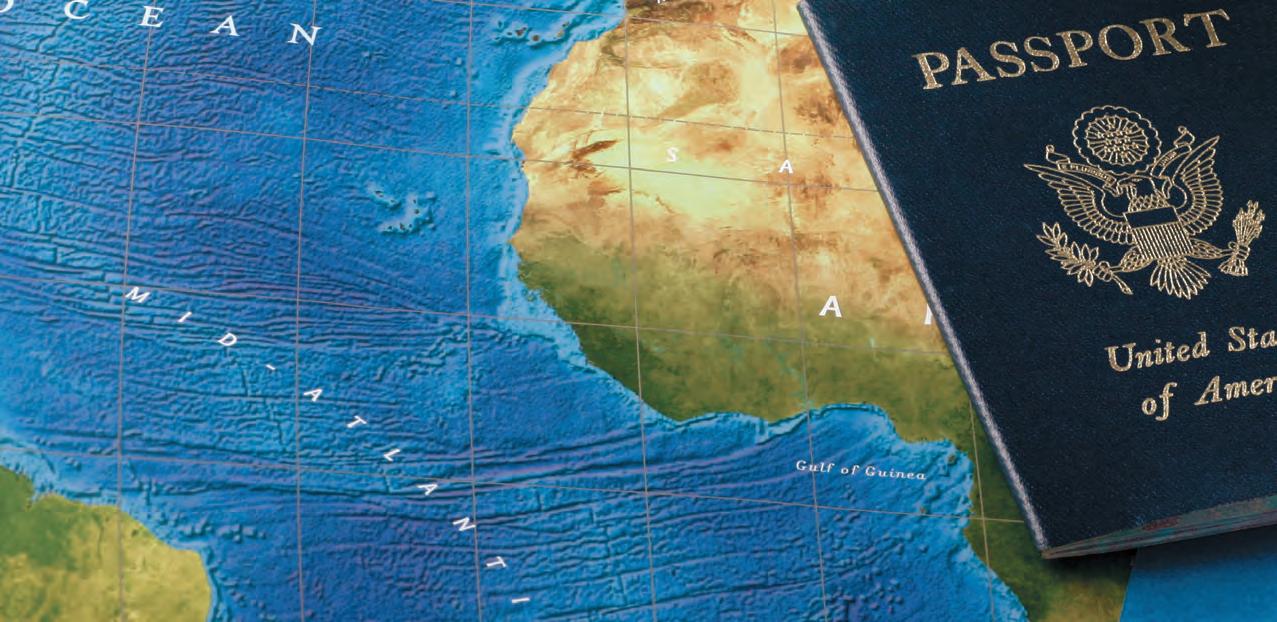






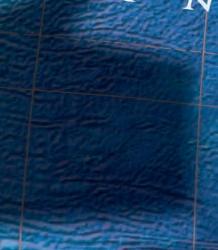
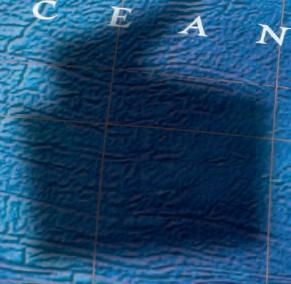




















































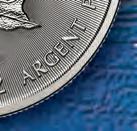
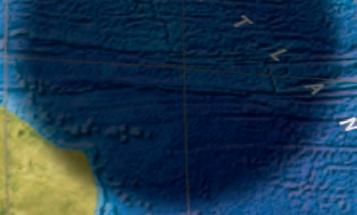








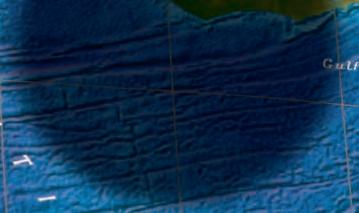







Travel the globe, without leaving home—with this set of the world’s fve most popular pure silver coins. Newly struck for 2024 in one ounce of fne silver, each coin will arrive in Brilliant Uncirculated (BU) condition. Your excursion includes stops in the United States, Canada, South Africa, China and Great Britain, and this is the first time the Silver Passport Set has included two coins with obverses featuring Britain’s King Charles III!
We’ve Done the Work for You with this Extraordinary 5-Pc. World Silver Coin Set
Each of these coins is recognized for its breathtaking beauty, and for its stability even in unstable times, since each coin is backed by its government for weight, purity and legal-tender value.
2024 American Silver Eagle: The Silver Eagle is the most popular coin in the world, with its iconic Adolph Weinman Walking Liberty obverse backed by Emily Damstra’s Eagle Landing reverse. Struck in 99.9% fine silver at the U.S. Mint.




2024 South African Krugerrand: The Krugerrand continues to be the best-known, most respected numismatic coin brand in the world. Struck in 99.9% fine silver at the South African Mint.
2024 Canada Maple Leaf: A highly sought-after bullion coin since 1988, this 2024 issue is the FIRST Maple Leaf coin to bear the effigy of King Charles III. Struck in high-purity 99.99% fine silver at the Royal Canadian Mint.




2024 British Silver Britannia: One of The Royal Mint’s flagship coins, this 2024 issue carries the portrait of King Charles III for only the second year ever. Struck in 99.9% fine silver at The Royal Mint.





2024 China Silver Panda: China Silver Pandas have been collectors favorites since their introduction in 1983—noted for their heartwarming one-year-only designs highlighting the maturing of Panda cubs. Struck in 99.9% fine silver at the China Mint.
SAVE with this World Coin Set!
You’ll save both time and money on this world coin set with FREE Shipping and a BONUS presentation case, plus a new and informative Silver Passport!
Just Released and AVAILABLE NOW!
These amazing, just released 2024 Silver Passport 5-Coin Sets featuring five popular Silver Dollars from around the world are in stock now.
Don’t wait. Order now and your 2024 Set will ship directly to your door. Order your Silver Passport Set right now—while they last!
2024 World Silver 5-Coin Set


Regular Price $249 – Only $199 per set!
FREE SHIPPING: Standard domestic shipping. Not


SAVE $50.00 (over 20%) + FREE SHIPPING
